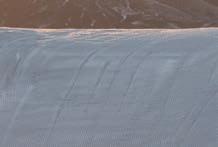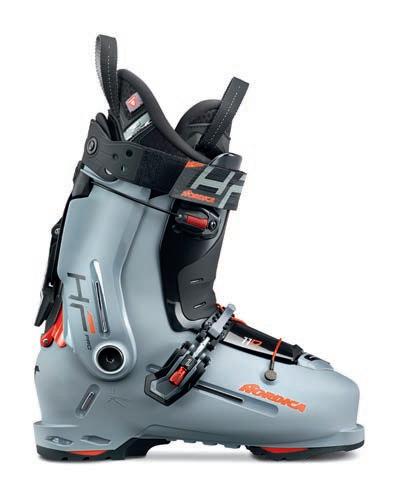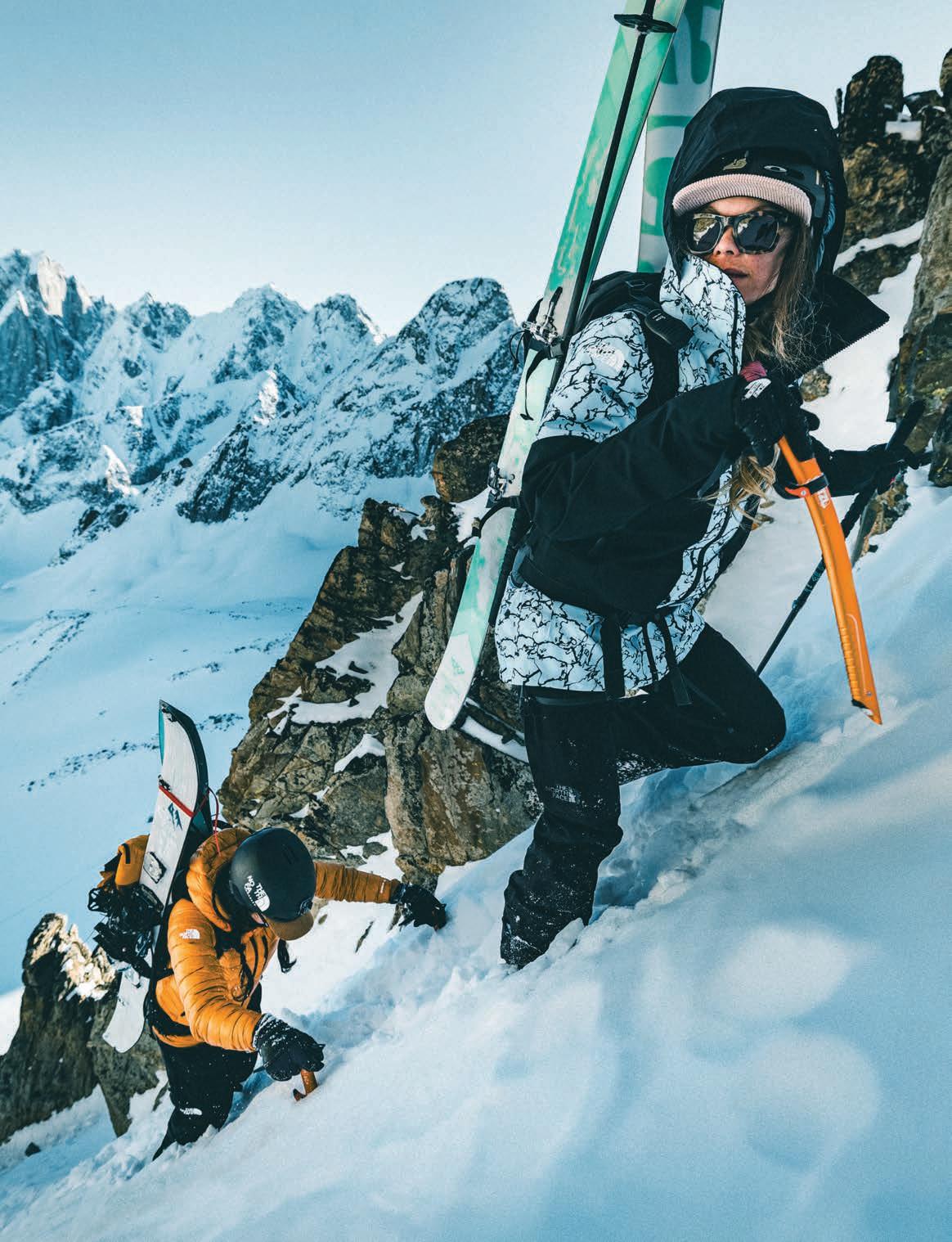




Welcome to the new Explore magazine, which is buzzing with excitement for the ski season ahead. This winter sees the launch of a partnership with our friends at TG Ski – their chalets in the heart of the Alps really do make for a memorable ski holiday.
This issue shines a spotlight on the brilliant work of Snow Camp, a charity that gives young people the fantastic opportunity to discover what skiing is all about (page 6). We’ve been supporters for many years, ever since its founder, Dan Charlish, asked for our help kitting out a group he was taking to the Alps.
We also follow six friends as they savour the experience of skiing within the Arctic Circle (page 22). If you’re inspired by their Icelandic solitude, head to page 32, where you’ll find a roundup of resorts that go under the radar and deliver an almost deserted piste. Want to share your love of skiing with the family? Head to page 64 where Sam Haddad looks at how to keep the cost down on a trip with kids.
Expect our events highlights and extensive gear recommendations as well. As always, our full ranges are available online and you can demo the latest skis for free at selected stores. Our shops are always ready with personalised fitting services and the best advice too.
ellis-brigham.com


For more inspirational content and ideas follow us on our social channels. We’d love to hear about your adventures – share them with us using the tag #ellisbrigham
04. DIARY: WHAT’S ON
Unmissable events to spice up your ski season
06. SPOTLIGHT: SNOW CAMP
How one UK charity is broadening young people’s horizons on snow
08. FOCUS ON: SKIING BY TRAIN
Discover the benefits of Alpine rail travel
12. TECH TALK: WAX OFF...
The science behind PHANTOM Glide’s permanent base treatment
14. SPEED DEMON
EXPLORE interviews the Swiss skiing maestro, Marco Odermatt
20. TG SKI
We profile our hosts for the 24/25 season’s clothing shoot
22. ICELAND ROAD TRIP
From the summit to the sea in the land of fire and ice
Must-have gear for your backcountry adventures
32. BELOW THE RADAR
Six destinations that will take you on the piste less travelled
40. SKI CLOTHING
Stylish and functional: this season’s top picks
50. THE BIG TEST
Get the lowdown on how Ellis Brigham selects its gear
54. THE CUTTING EDGE
Our selection of the very best skis for winter 2024/25
58. DPS SKIS
Meet the pioneering brand aimed at serious mountain lovers
Explore highlights from the new season’s ski boot range
64. FAMILY SKIING
How to make a mountain holiday with the kids more affordable
68. MOVING OFF-PISTE
Essential safety and equipment advice for progressing to powder
72. LOOKING AHEAD
Cutting-edge goggles and helmets for your next mission
74. RISING STAR
Our team member Tom Greenway on his freestyle journey
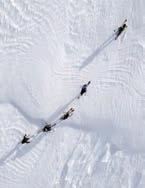
Proud to support





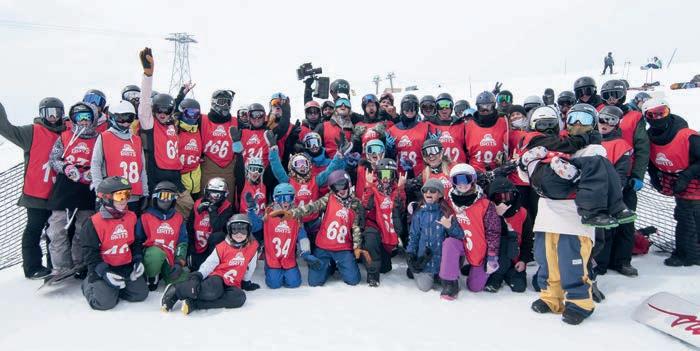

For the first time since 2019, British snowsports favourite freestyle competition ‘The Brits’ will take place in Mayrhofen, Austria this winter.
Sponsored by Ellis Brigham and The Snowboard Asylum, the week-long event will see the most promising young British riders compete for the slopestyle, big air, rail jam and ski/snowboard cross championships across six different areas around the resort.
Join the fun from 29th March – 5th April to find out why Mayrhofen is one of our favourite resorts while spending a memorable week watching some incredible skiing and soaking up the legendary après at Scotland Yard, Mo’s or Bruckenstadl.
For full details including schedules, accommodation and travel, head to britssnow.com
Confidence Clinics
21 October – Snowdome, Tamworth Masterclass
5 February - Bristol
6 February - London
Louise Pode is a leading International
Confidence Coach for Anxious Skiers. Alongside New Generation Ski School, she will be sharing her tips and strategies for building your confidence on the slopes, no matter what your level of skiing is.
Henry’s Avalanche Talks
29 & 30 October - Covent Garden
31 October - St Paul’s
19 & 20 November - Manchester
25 & 26 November - Braehead
With the start of winter, it’s a great time to learn or refresh the skills needed to be a safe and confident skier on the mountain. Henry’s talks deliver both essential and in-depth information around avalanche safety.
GORE-TEX Talk
13 November - Covent Garden
In this exclusive evening, we reunite Montane athlete Jesse Dufton and director Rachel Sarah to introduce and go behind the scenes of their film, Breaking Trails: Blind Ascent.
GORE-TEX Gear Tour
14 November - Covent Garden
Ripped your ski jacket or pants recently? Here’s your chance to get your much-loved GORETEX gear restored free of charge so you can wear it for longer. Repairs include zip slider replacement, hole patching, hot tape sealing, cuff replacement and more.




For more information, upto-date listings and to book your place scan here
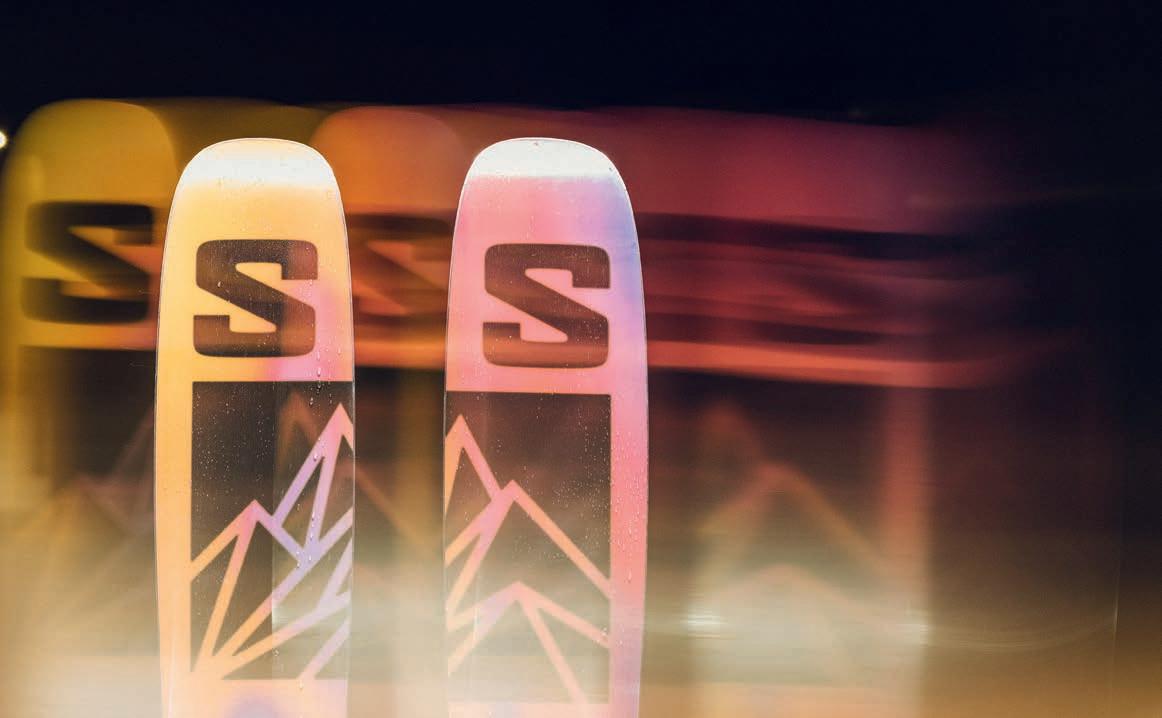

From the streets to the slopes, one UK charity is using snowsports to broaden young people’s horizons. Ed Blomfield meets the team behind this transformative programme.

It started with a question. In 2002, youth worker Dan Charlish was watching a group of young people in Stockwell, London, play a snowboarding game on their Xbox. “Could you ever see yourself doing that?” he asked. Their response was telling: “Kids like us don’t do that. We don’t have the money.”
This exchange inspired Charlish to take 13 young people on a trip to the French Alps, and – emboldened by its success – the following year he founded Snow Camp. In the two decades since, this groundbreaking charity has impacted over 20,000 young lives across the UK.
“The power of the mountains is completely life-changing,” explains Dan Keeley, Snow Camp’s Community Manager. “You get young people away from the challenges they’re facing in their daily lives to a completely different world.” This environmental shift, coupled with the exciting challenge of learning to ski or snowboard, provides a uniquely effective platform for youth work.
Snow Camp structures its mentorship around three programmes. It begins with ‘First Tracks’, a two-day taster session at indoor snow centres during the summer holidays. This is followed by ‘Graduate’, a five-week intermediate programme in early winter, and finally ‘Excel’, a ten-week advanced course that culminates in a week-long trip to the mountains. Along the way, participants aren’t just learning to ski or snowboard; they’re developing crucial life skills. “When you start delivering the youth work side of it – with goal setting and aspirations, respecting your environment, looking out for each other, confidence, selfesteem – you’ve got something really powerful,” Keeley explains. The charity focuses on reaching young people from areas of high deprivation. “We’re always trying to reach the most disadvantaged young people in the UK,” he says. “About 72% of our young people are eligible for free school meals, which means they come from households with a very low annual income.”
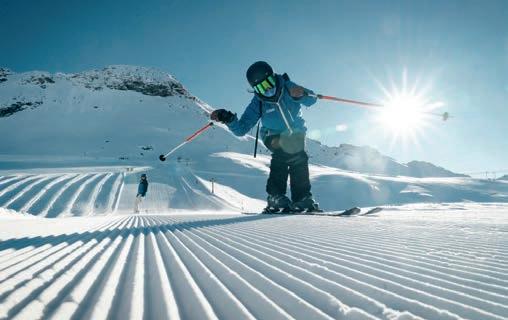
“The power of the mountains is completely life-changing”
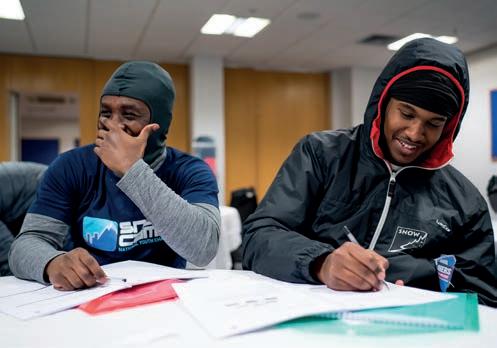
Currently, Snow Camp operates from four regional hubs: London, the Midlands, the North West, and Scotland. It’s primarily aimed at inner cities, with participants arriving via existing youth projects and community groups. “Snow Camp exists to break down barriers and broaden horizons,” stresses Keeley. “And the outcomes are life skills, qualifications and positive vocational or career opportunities. That’s our north star.”
Industry partnerships are one such way in which the charity opens doors. For example, Inghams regularly offers chalet-based apprenticeships to graduates of the programme, while Ellis Brigham has been a champion of Snow Camp since the early days – helping with fundraising initiatives and competition prizes, and offering regular work placements on the shop floor. “In London, we might have two or three young people in the store at any one time,” says Keeley. “And we know of probably five or six that have gone on to get full-time jobs with Ellis Brigham.”

Today, Snow Camp boasts numerous high-profile athletes and winter sports personalities as ambassadors – including Graham Bell, Ed Leigh, Jenny Jones and Chemmy Alcott. However, one of its proudest achievements is the high number of graduates who return to volunteer. “Last year, we accrued over 3,000 hours of volunteer time donated back to us from previous participants,” Keeley says. There are countless inspirational success stories for these volunteers to draw on, too, such as that of a young Londoner called Jonjoe Boulter, whose journey recently featured on the BBC. “He came from quite a disruptive background in Hackney,” recalls Keeley. “He went through the Snow Camp programme, became an apprentice, and then Warren Smith – who saw a lot of himself in Jonjoe – invited him to come out and instruct with the Warren Smith Ski Academy.”
Looking to the future, the charity has its sights set on expansion. “The northeast is on our horizon,” Keeley reveals. “I used to work at the Castleford indoor slope, so it’s a place close to my heart. I can’t wait to get Snow Camp up there because it will open up Sheffield, maybe Bradford, and hopefully Sunderland and Newcastle.”
Over 20 years since an innocent exchange on the couch snowballed into a full-blown charity, Snow Camp continues to grow and evolve. But its mission – to turn young lives around through the power of snowsports – remains the same. “It lights our souls when graduates go on to work in the industry,” says Keeley, “but you know – we’ve done our job effectively when we’ve set any young person up to pursue anything else they want in life.”
To find out more about Snow Camp or to offer your support, go to snow-camp.org.uk
Europe’s efficient rail network offers a scenic route to more sustainable skiing. Iain Martin explores the joys of low-carbon alpine journeys.
My train hugs the croissant-shaped shoreline of a mirror-perfect Lake Geneva, the track bisecting terraced vineyards and elegant lakeside villas with snow-covered lawns.
As the medieval Château de Chillon comes into sight, with the Dents du Midi range towering behind, it feels less a train ride, more a moving postcard through Switzerland.
I’m on my way to Verbier, revelling in the natural beauty around me, but also enjoying the eco-
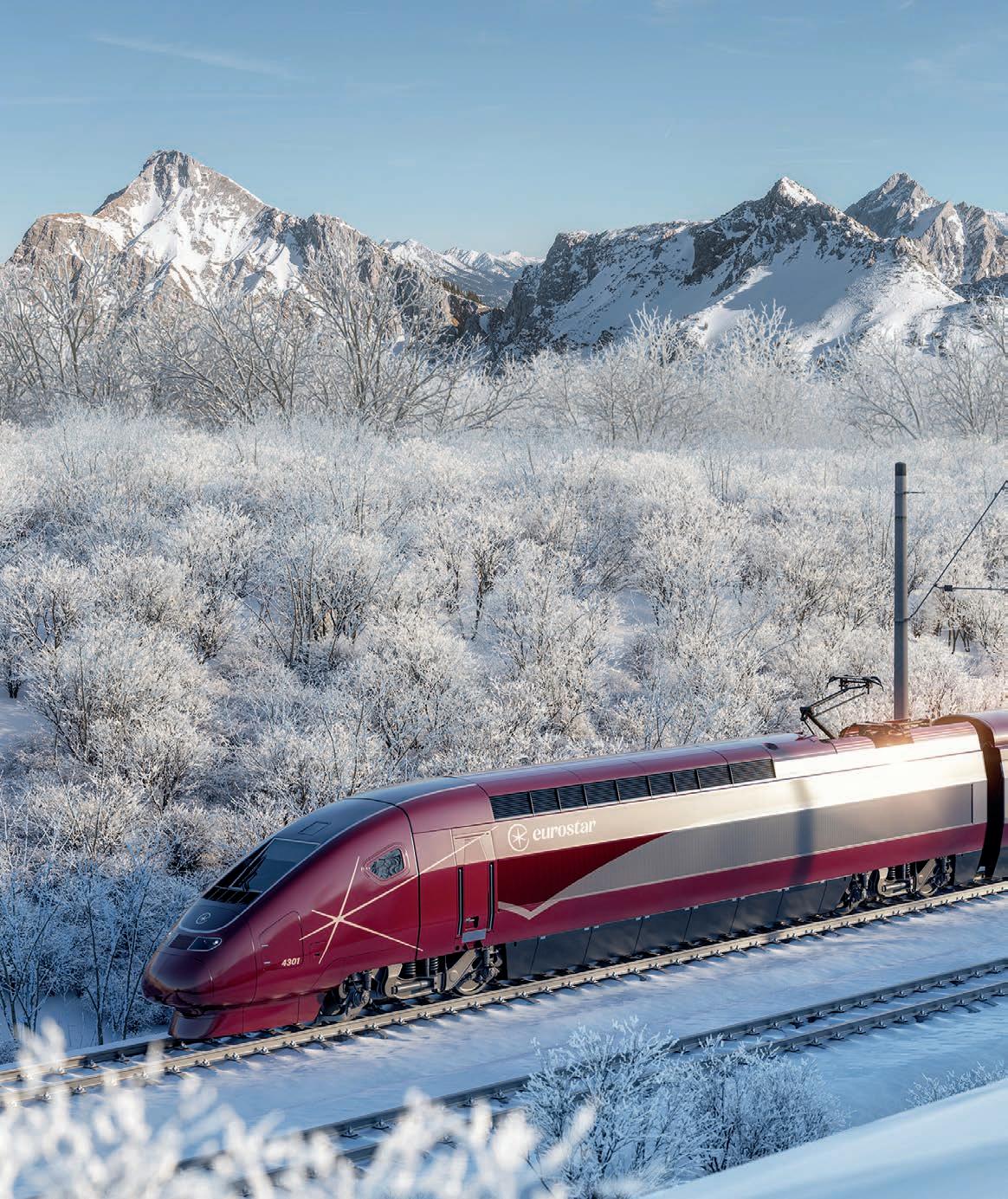
satisfaction of a low-carbon ski trip.
Skiers know better than anyone the existential threat that climate change presents to snowsports. If global warming continues as predicted, seasons will be shorter, and the snowline will shift even higher.
Research from Protect Our Winters has found that 66% of the carbon footprint of a ski holiday is caused by the flights. Travelling by train has less than 10% of the impact of flying, making it the most effective way
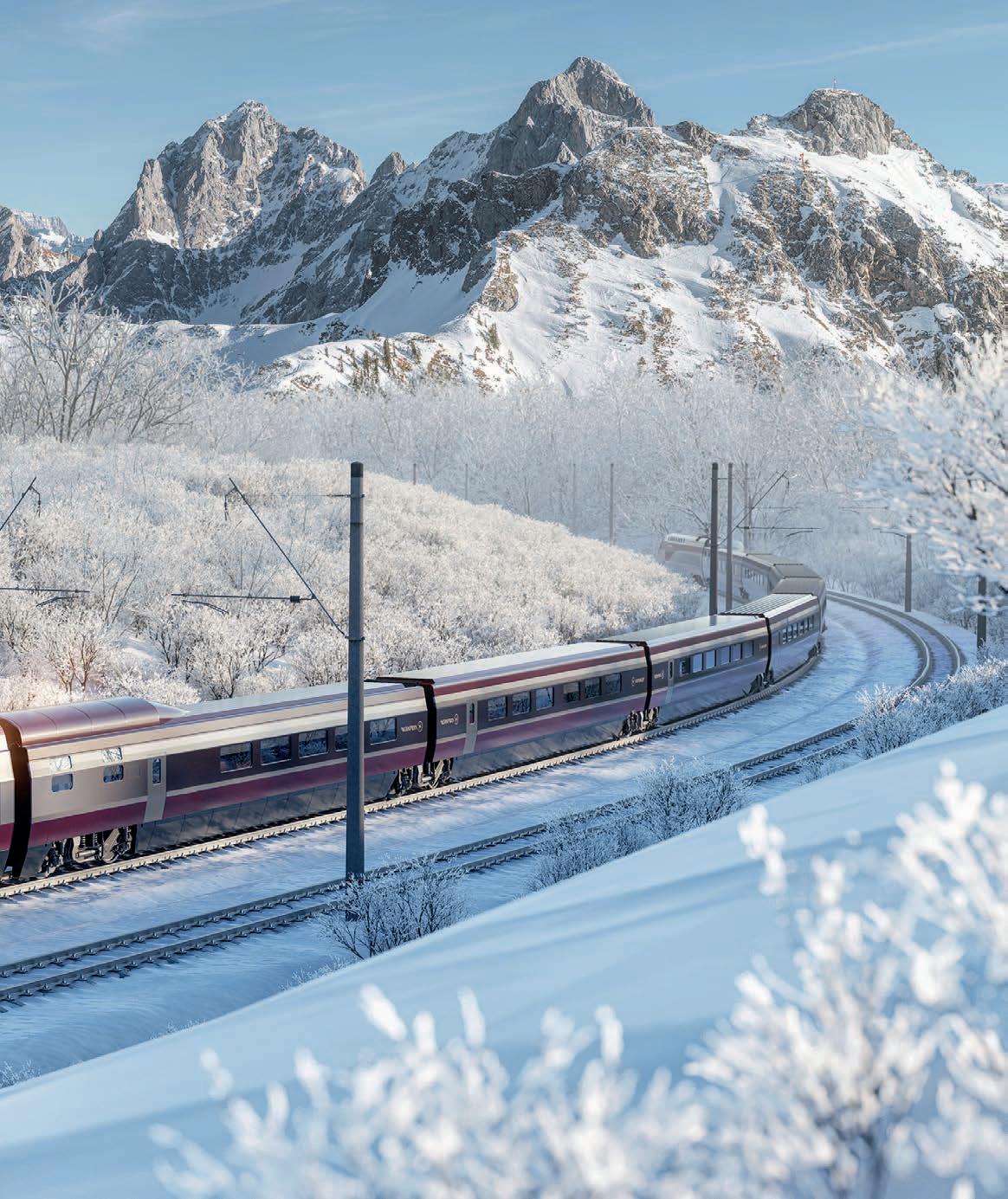
The
Les Arcs funicular ferries you straight from the platform at Bourg
St Maurice.
Photo: Raj Bundhoo
to make your ski holiday more sustainable. Yet according to research by The Ski Club of Great Britain, only 2% of us choose to take the train, despite the environmental benefits.
The main reason most skiers give for not going by train is that it takes too long. Yet as I write this, I’m travelling at almost 300kmh across France, admiring the tableaux of French rural life passing in front of me. When you travel by train, the journey becomes part of the holiday, adding to your experience rather than taking away from it.
The argument that trains are more expensive than flying is more compelling. You won’t find any trains from the UK to the Alps for £29. However, train travel probably isn’t as expensive as you imagine (see our tips below).
It’s so much simpler too: there’s no worrying about whether you’ll be stung for extra baggage fees as you try to sneak an over-sized cabin bag onboard a flight, no restrictions on liquids, and no jamming all your toiletries into a plastic bag.
The perceived complexity of train travel to ski resorts can also put people off. Skiers know ‘how’ to fly. You turn up at the airport, move from one deadline to the next, then get spat out at the other end, hoping your luggage hasn’t gone missing. It’s then a dismal trudge through the traffic to your destination.
There are no traffic jams when you travel by train. You do have to change en route, although it’s not complicated. If you take the recently revived Eurostar Snow Train service, you’ll walk about 100 metres along the platform in Lille. Independent travellers via Paris simply take the Metro two stops from Gare du Nord to Gare de Lyon, a journey of about 30 minutes.
To make it even easier, tour operators such as Travelski, Inghams, Ski Solutions and SNO all offer the Eurostar Snow Train together with accommodation and transfers. Inghams also offer train packages via Paris to 15 resorts in three countries.
The websites skiflightfree.org and snowcarbon.co.uk are great resources for further advice on travelling by train to ski resorts. However, you choose to book, maybe this year is time to sample of joys of train travel. Come for the eco benefits, stay for the experience.

“Train travel isn’t as expensive as you imagine. It’s so much simpler too”


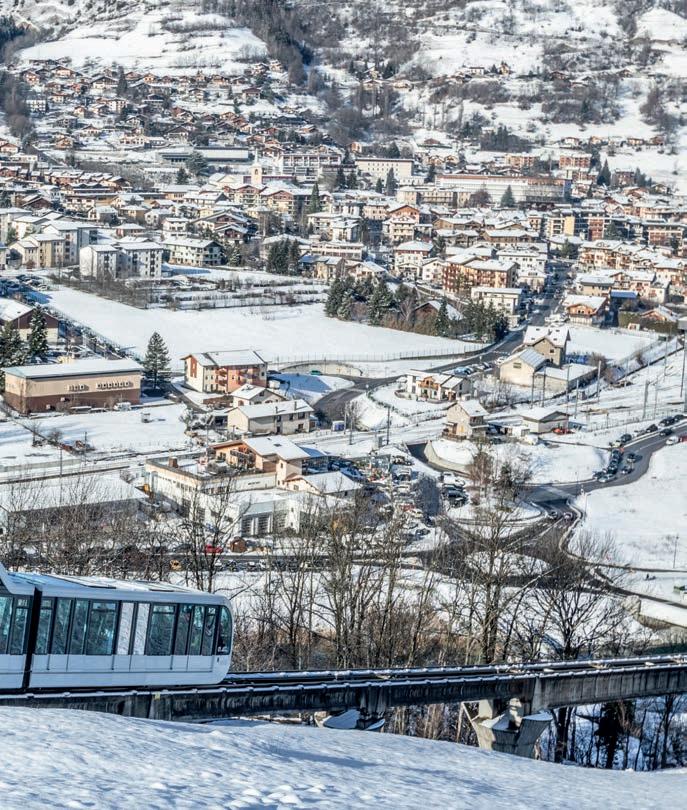

Take the Eurostar Snow Train to Bourg St Maurice, then walk to the end of the platform to take the state-of-the-art funicular direct to Les Arcs 1800.
Anyone travelling by train to Morzine qualifies for a 10% discount on your lift ticket, thanks to the AlpinExpress pass, which also includes other discounts around the resort.
While an overnight train to Austria via Amsterdam is an option, if you want to do the journey in one day, travel by Eurostar to Paris and connect to Zurich. A direct train then takes you into their award-winning station.
The joy of travelling by train to Verbier (via Paris and Geneva) is the seamless final leg: simply walk across the platform at Le Chable and take the cable car straight up into the resort.
Although continental trains don’t go on sale until three months before travel, Eurostar has an 8-month window. If you know your dates, book early and you’ll rarely pay over £100 return.
Once you have your Eurostar booked, you can ensure you’re one of the first to buy your onward journey (and enjoy the cheapest fare) by signing up for a ticket alert.
When booking your European leg, consider upgrading to first class. It’s often only a few euros more expensive but will give you more space and add to the sense that you’re travelling in style.
When you travel by train, the journey is part of the holiday. So why not take your time and enjoy a meal in the ‘City of Light’?

A revolutionary treatment promises to change how we maintain our skis and snowboards. Global Sales Manager Doug Sheehy explains the science behind PHANTOM Glide and its potential impact on the industry.

What is PHANTOM Glide and how did it come about?
PHANTOM Glide was invented about seven or eight years ago, starting with DPS skis in conjunction with some chemists at the University of Utah. It's the first permanent glide solution for skis and snowboards that can maintain its glide aspects for the life of the equipment.
Can it be applied at home or just in store?
Both. We sell a DIY kit, but it requires sunlight and warm days for the best results. For places without consistent sunshine, in-store application is recommended.
What does that process look like?

bonds the solution to the base material, penetrating deeper than wax.

The base needs to be freshly tuned or waxstripped. The solution is applied, then cured in a UV light box for about 20 minutes. This

A base treatment that lasts forever – it sounds too good to be true! How does PHANTOM Glide actually work?
It's a carbon-based, PFAS-free formula. UV light changes the molecular structure, bonding a short chain polymer to a long chain monomer. This makes the base hydrophobic, repelling water and improving glide.
Could it theoretically be applied in the factory, or incorporated into the base material during manufacture?
manufacturers. It would require industrywide adoption or separate production of treated base materials.
What's it made from? Is it environmentally friendly?

Yes, it could be applied in the factory. We do it with DPS skis. However, incorporating it into base materials during manufacture is challenging because only a few facilities produce these materials for all the



It's a carbon-based, PFAS-free formula that's non-toxic. And it's environmentally more friendly than continually applying wax to the ski, which then winds up in the snow. In fact one of our taglines is "Today's snow is tomorrow's water." We're trying to reduce the amount of wax, paraffins, and other substances that end up in the snow and, eventually, our water supply.
Is the performance just as good as regular wax?
It's better than any universal wax. There are some limitations in extreme temperatures,



“IT'S
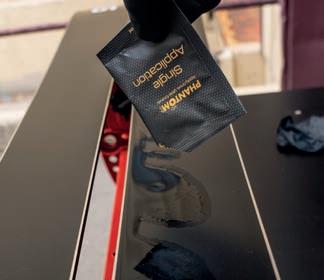

but overall, it performs well across a wide range of conditions.

Are there any misconceptions about PHANTOM Glide?
One of the bigger misconceptions is that it's going to be better than a race wax. People think they're going to step on the snow with a PHANTOM ski and it's going to just take off on them. That's not what PHANTOM is, although it can feel like that. If you have a good, well-tuned ski, it's going to perform better than any universal wax, and we have factual data to support that. It's going to last longer too.

conditions, fresh snow conditions, and really cold conditions – and I didn't feel like I needed anything else on it. That was a new ski straight out of the factory.

So just how long does it last? If applied properly, it lasts the life of the ski or snowboard. I skied one pair of skis all season last year here in Vermont - in warm
Does the base need prepping first?
Yes, it's best applied to a freshly tuned or new ski with the wax stripped off. A good grind on the ski will make it more hydrophobic, enhancing PHANTOM's effectiveness.
Do subsequent base grinds affect it at all? If done properly, PHANTOM Glide penetrates through the full depth of the base. Subsequent grinds will refresh and smooth the base without affecting the treatment. We also include a buffing pad with every application. It's a pocket-sized pad, similar to a Scotch-Brite pad, that you can carry with you while skiing. If you notice


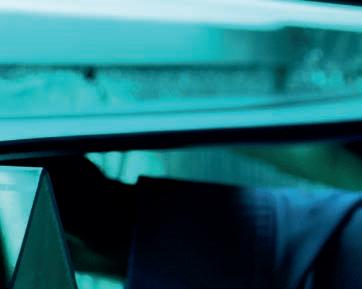

you're not gliding as well after several days of skiing, you can use the buffing pad to refresh the base. This knocks down any micro-fibers that have developed, restoring glide performance. For more significant wear, you'd still want to get them ground just like you would with wax.
Can you – and should you – wax on top? You can wax on top if desired. Some anecdotal evidence suggests PHANTOM might help retain wax better, but it's not necessary for performance.

Does it work better on sintered or extruded bases?
It works better on sintered bases because they're more porous. It will work on extruded bases, but it's not as effective due to their melted, less porous nature.



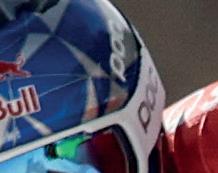
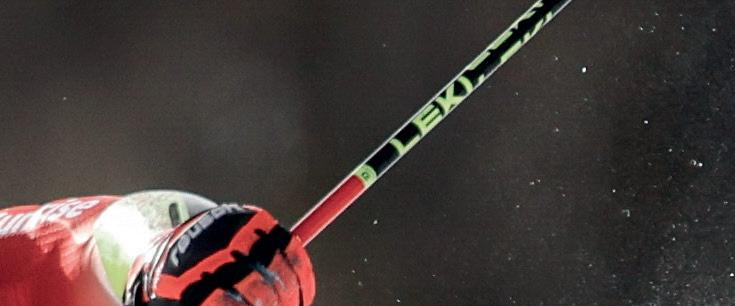






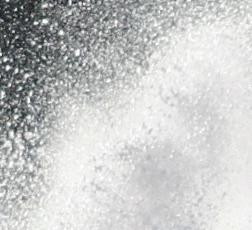
Amy Marwick talks to the Swiss skiing maestro about his meteoric rise into the Alpine skiing hall of fame.
Right now, Marco Odermatt is the fastest man in ski racing. The 26-year-old from Buochs, Switzerland, has taken on Federer-like status in his home country as his list of accolades keeps getting longer. Dominating in the Giant Slalom, Super G and Downhill last winter, the DESCENTE athlete secured the Overall Crystal Globe for the third year in a row. In 2023 he won gold in both the GS and the Downhill at the World Championships; in 2022 he secured Olympic victory in the GS; and over the last nine years he has accrued 37 World Cup wins, standing on the podium a whopping 71 times. So, while he’s a long way from becoming the GOAT, he is certainly laying some solid foundations.
Known for his dynamism, agility, and determination, Marco goes into this World Championship season as the man to beat. I caught up with him at the end of summer to find out how he got to where he is today and how he’s been preparing for another big season up against the clock.
First up, what does a ski racer do in the summertime?
Not much. We relax, we soak up the sun... Just kidding. In the summer we lay the foundation for next winter. After a couple of weeks off, we get right back into
training. I spend a lot of hours in the gym, on the bike, either alone, or with my teammates, and we stay away from the snow until August. That’s when we get back into training, usually in Switzerland and South America. I enjoy the summer a lot, even though the training is really intense. It gives me the confidence that I’m ready for what’s to come. I get to train mostly at home which allows me to see my friends and family more and spend some time on the lake – I love wakeboarding.
Having grown up in the Swiss Alps, you were introduced to ski racing at a young age. How has your relationship with the sport evolved over time?
I would say it’s both. I have loved skiing from day one, and I still love it, even without the clock component. Racing was something that came naturally when I first joined the ski club and then I wanted to get out there and win. I wasn’t always the fastest in my younger days; racing could be a bit of a challenge at times, and a source of frustration. But I’ve managed to overcome this and today racing is more about racing against and with the elements, trying to overcome the challenges that the mountain poses. It’s not like athletics, where the clock dictates a lot more.
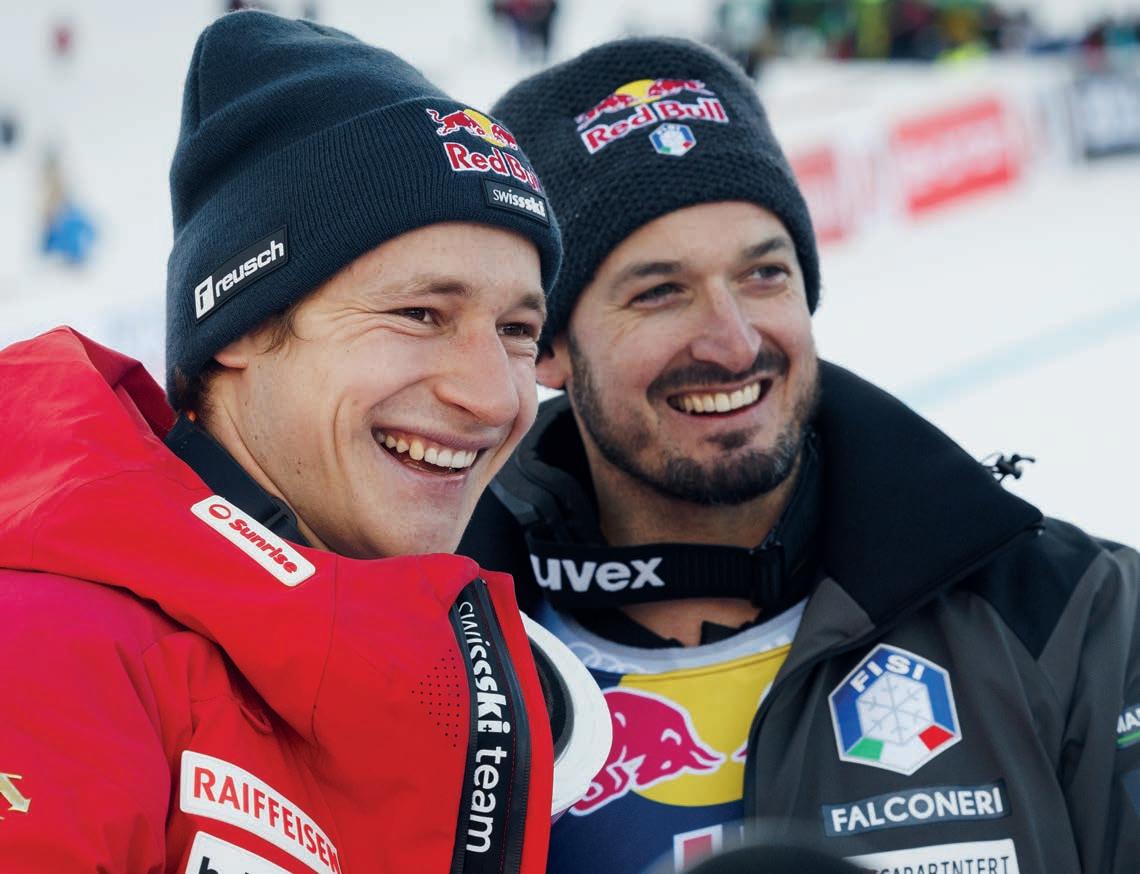

“DON’T
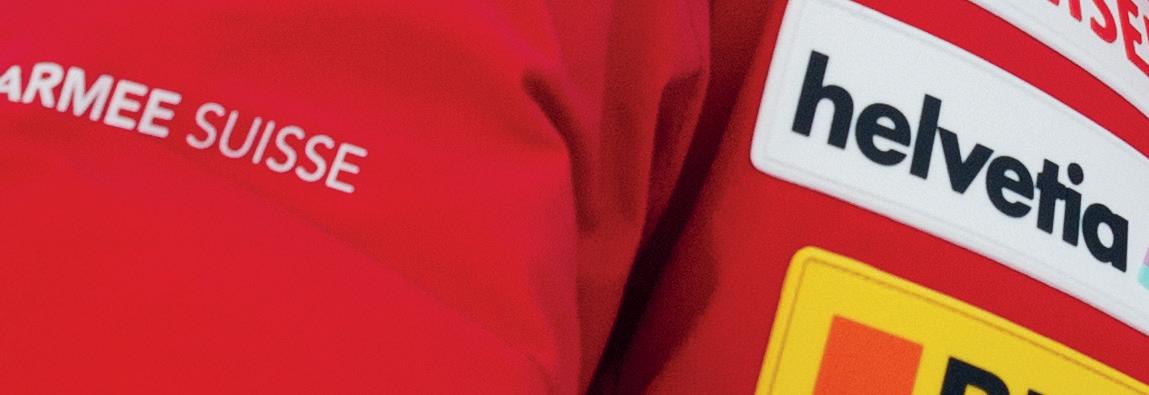



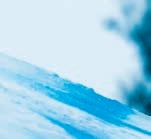



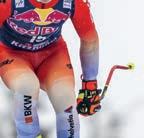
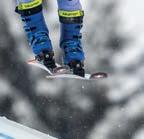
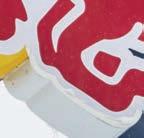











Did you always imagine you would pursue life as a ski racer, or at what point did you realise, “I can make a career out of this”?
I always dreamed about it, but when you are young it’s hard to imagine where your passion might take you. I guess the first time I realized that I was onto something was when I managed to get into the sports school, a high school for athletes. That was a very important step in my development. That’s when a career became a possibility.
You compete in the Giant Slalom, Super G and Downhill, what’s your favourite discipline?
That’s a tough one. Giant Slalom is the foundation for all other disciplines and that’s where I’ve had most of my successes. But I’ve always loved the speed and adrenaline of the Downhill. The Super G is in between, and it’s helped me a lot to develop into becoming a better Downhiller. So, it’s hard for me to pick one. You ask a father with three children who his favourite is, you probably get a similar answer… You love them all equally even though they are not the same!
What has been the biggest highlight of your career so far?
Puuhh, another difficult one. It’s tough to name THE biggest. Winning the first Overall Crystal Globe was definitely a huge highlight because it is proof that you are a complete skier and can be consistent at a high level over an entire season. The Olympics rank very high because so many things have to fall into place in order to win a medal, but then something similar can be said about World Championships. Winning the Downhill World Championships itself was a highlight for sure, but also the race itself… It was as close to the perfect Downhill race I’ve ever had.
At just 26 years old, you’ve been dubbed one of the best Alpine skiers of your generation. How have you managed to maintain and improve on your success year on year?
I think any athlete always wants to get better, to be better today than you were yesterday. You set yourself goals and you know you have to work hard to achieve them –whether it’s a specific race, a record, or even the perfect run. I guess you can call it the pursuit of excellence. That’s a big driver. And then you have your competitors that help bring out the best of you. I thrive on the competition aspect and love when we can push each other.
Who or what has been the biggest support or inspiration to you during your career so far?
It all starts with my family. My parents had a major role, they taught me how to ski and showed me the beauty of skiing, without ever putting any pressure on me. I was also always a big fan of Didier Cuche, the record winner of Kitzbühel and one of the best downhill racers in history.
You’ve talked about keeping an open mind to things out of your control and trying different methods to get into the right mindset before a race. What works best for you these days at the start gate?
When I stand at the start gate, I’m at the end of a routine that I go through before every race. It starts early in the morning at the hotel and then about 30 minutes before the race, I have my warm-up routine, which includes not only my leg, core or arm muscles, but also my eyes. Then I go through the run in my mind, I make my way toward the start gate, close my boots and make sure my goggles are staying put. I do most of this without thinking, it’s a routine. It gives me the confidence that I’m ready.

Favourite piste on the World Cup?
Probably Adelboden, the final stretch to the finish line and into the stadium with the screaming fans is spectacular.
Favourite resort to ski in?
Titlis. I learned how to ski there, it has amazing views and it’s always trying to improve as a resort.
Somewhere you’ve never skied, but would like to?
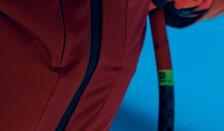

Ice or powder?
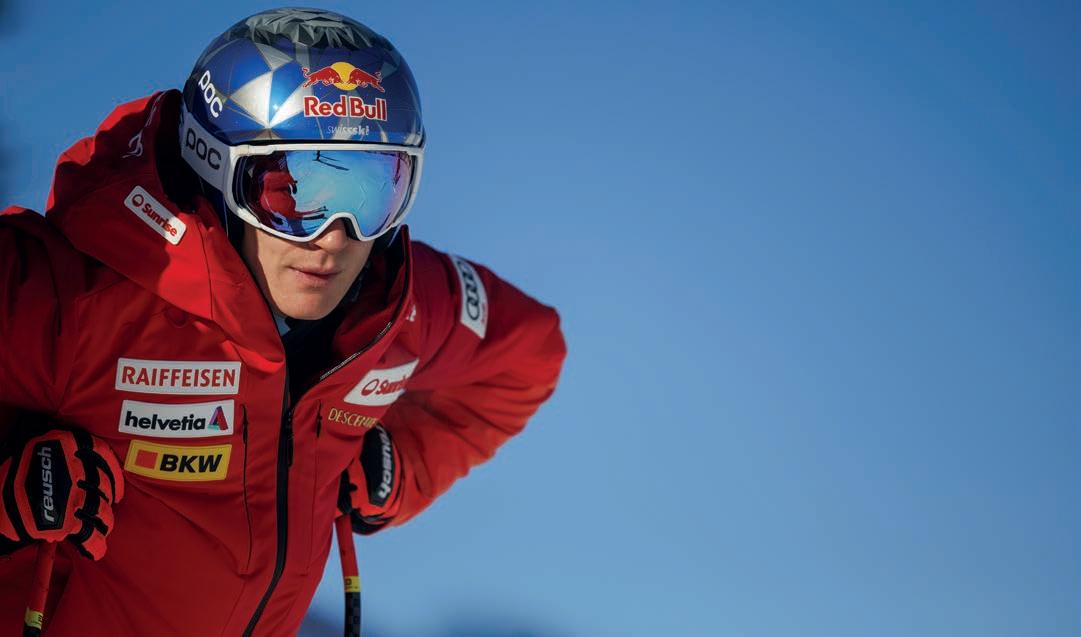
You’ve been in partnership with DESCENTE since 2018, skiing in their race suits and working as an ambassador for the brand. Do you get to give much input into the design of the gear that you use? I actually do, yes. We get together at least once a year to discuss the collection. Based on the first drafts that come from DESCENTE I give my input and feedback, tell them my favourites, what I like, and what I don’t like. It’s great to know that my feedback is valued and makes a difference.
What’s your favourite bit of kit from DESCENTE and why?
Tough one. I like the Swiss Pants because the zippers are exactly where they need to be; they’re functional and smart. I also really like the Hybrid Down Jacket because I can wear it both for skiing and leisure activities.
What are your goals for the upcoming winter season 24/25?
In terms of individual races, the Downhill in Kitzbühel ranks very highly. I’ve been very close to winning it, so this year I would love to go all the way. It’s one of the classic races on my bucket list. And since it’s World Championship season, being in the best possible shape come February is my big goal.
Tell us about your skis and boots setup for next winter?
Lucky to say that it’s basically the same setup as the last few years. With Stöckli’s team I have a fantastic
My dream is to go heliskiing in Alaska or powder skiing in Japan once. I love powder skiing but I don’t find much time for it.
For casual skiing definitely powder. For racing I prefer ice to softer snow.


Bluebird skies or snowy days?
Bluebird skies the day after a snow day.
Favourite thing to do when you’re not on snow?
Be active doing different sports and have a nice barbecue or dinner with friends.
Hardest lesson you’ve learned?
Not the hardest but an important one: Don’t try to beat the mountain; the mountain is your friend.
relationship. We work together very closely in developing the best possible set-up. Salomon has been my boot and binding partner for many years, as well. I’m very excited how this combination has worked out for me.
Apart from winning medals, is there anything you hope to achieve with your success as a skier in the future?
Having idols and role models to look up to was very important for me when I was a young skier. I wanted to become like Cuche. Not just because he was a great skier but also because he’s a wonderful, likeable person. If I can inspire young boys and girls to become skiers and they see something in me that they want to become, then that would be wonderful. I just want to be a good role model for the generation that comes after me. Ideally on and off the slopes.
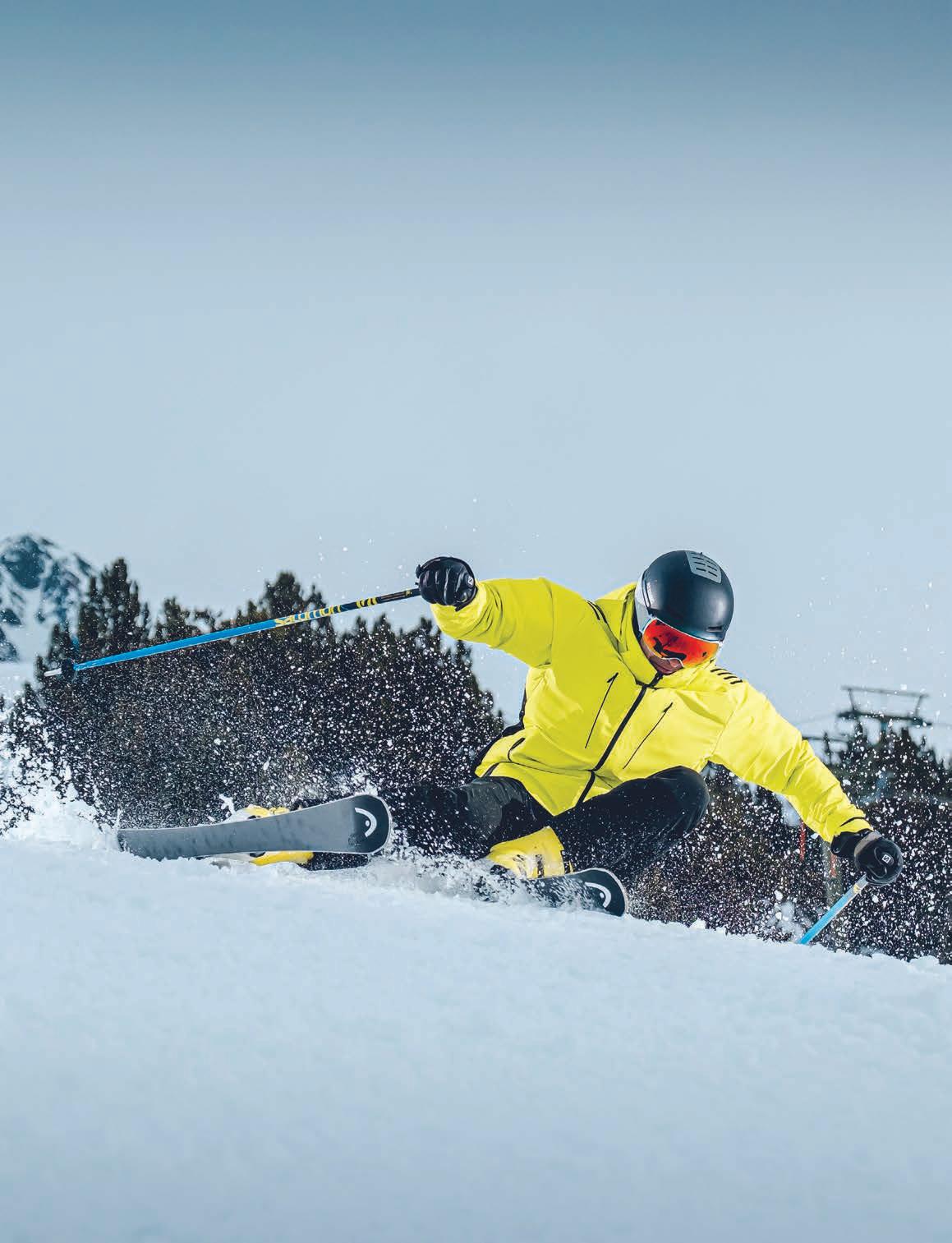

Luxury catered chalet specialists continue to go from strength to strength
TG Ski, a catered chalet company specialising in hassle-free ski holidays, celebrates its 20th anniversary this year, with a renewed commitment to providing the most attentive, thorough and personalised service.
There’s also a new addition to its coveted collection of 8 luxurious chalets – the 5-bedroom Chalet Amarena, located in a prime spot in Meribel with breathtaking views across the Meribel ski area.
Set up in 2004 by founding directors Tom Miklausic and George Powell, and joined in 2008 by Tom MarleyShaw as an equal partner and current Managing Director, passion for the mountains and love for taking care of people allowed TG Ski to build their success on firm foundations of high-quality food and drink, and an inspiring collection of hand-picked luxury chalets in Morzine and Meribel, allied with impeccable standards of service delivered in a friendly and personable style.
‘We were driven to create the kind of holiday that we would want to go on,’ say the directors. ‘And since welcoming our first guests through the chalet doors in 2004 we have constantly developed our inclusive catered chalet package. Throughout the challenges of the 2008 crash, Brexit and Covid, we’ve been resilient and adapted to the ways in which our customers’ wants and needs have changed.
‘All of the elements have centred around a hasslefree holiday that appeals to us. It is interesting that the principles have stayed fairly constant as we have moved through different stages of life, and our understanding of our guests’ needs has matured with us.



‘While we ourselves are not guest-facing anymore, we place a huge emphasis on quality staff that match our ethos - driven, confident and intuitive personalities that create the perfect environment for our guests.’
TG Ski have successfully carved out a market for their kind of ski holiday among many different demographic types – families, friends, multi-generational groups, corporate groups and international guests.
With TG Ski, everything is taken care of to allow guests to relax and enjoy themselves - from a concierge coordinating your stay to drivers waiting to whisk you home from the bottom of the slopes.
Both in Meribel and Morzine, each chalet has been chosen for its individual style and appeal, whether that’s a luxurious interior, a relaxing hot tub and sauna, or a ski-in, ski-out location. The dedicated concierge team know each chalet intimately and can guide you through selecting the ideal one for you and your group. Each chalet has a food & drinks service thoughtfully tailored to that chalet, all taking inspiration from menus from around the world and working with the finest local suppliers to bring together fresh and exciting ingredients.
Each team of chalet hosts is trained to deliver service to take the hassle away and ensure you get the most from your holiday with TG Ski. From wake-up drinks to champagne in the hot tub, TG hosts are on hand to deliver your perfect holiday.
And the concierge service begins even before your holiday starts, providing help with your travel arrangements, dietary requirements, ski hire, ski school, lift passes, creche and nanny services, spa treatments and any non-ski activities.
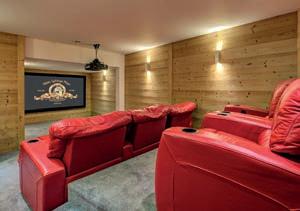

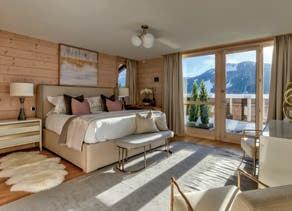
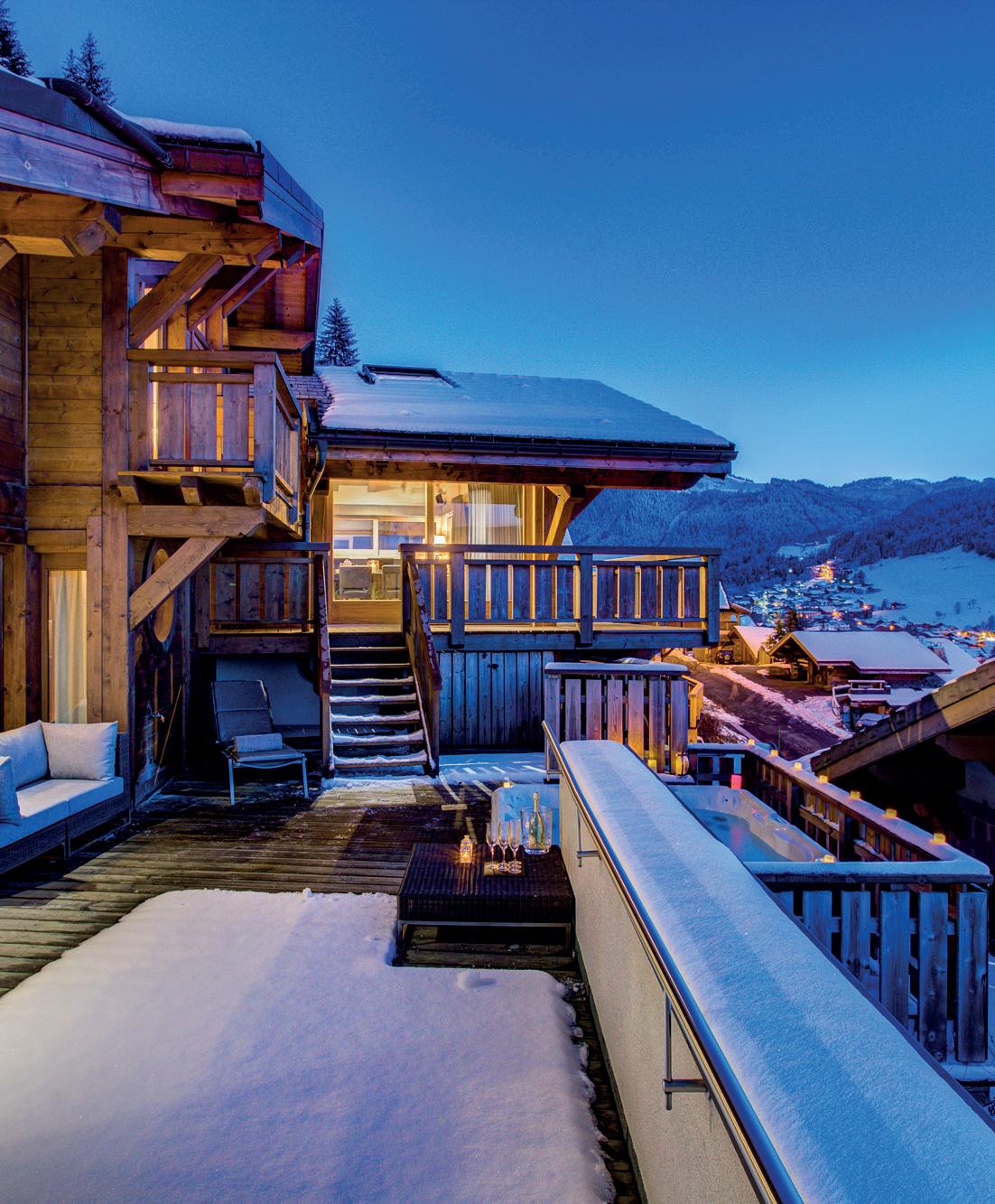
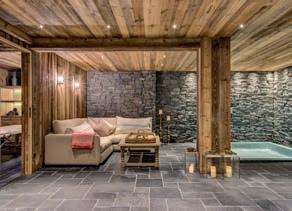






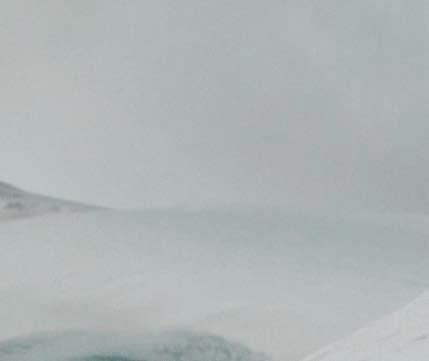








Iceland offers a unique blend of volcanic landscapes and world-class ski touring. Angus MacKinnon braves the elements on a journey in search of untouched powder.





“Try and stick her in reverse, you never know…”
These were the last words spoken before our trusty motorhome, fondly known as The Mothership, used all its available slip differential to heave us straight up and out of the snow-drift and back onto Iceland’s main highway.
The relief was immediate and the cheers were deafening. Judging by the countless abandoned vehicles we’d passed on the route so far, it had seemed a matter of time until we too were beached. Yet we’d managed to escape a situation that would have ended all hope of ski touring the Tröll Peninsula before we’d even strapped into our boots – and a short time later, we were descending from our first peak just as the weather cleared to reveal a partial solar eclipse.


Such a rollercoaster trip had always been in the offing. Two weeks prior to our departure, Iceland had declared a state of emergency due to volcanic activity on the Reykjavik Peninsula. Though our flight was unaffected, the sight of smoke pluming into the atmosphere from a hole in the ground near the runway didn’t fill us with confidence. Suddenly I felt very small, and wondered just how comprehensive my travel insurance actually was…
The goal was simple enough: get a solid crew together, rent some campervans, and enjoy some summit-to-sea descents in spring corn conditions – in between bobbing about in thermal baths and marvelling at the beautiful landscape. Though none of
“WE ARRIVED DURING WHAT TURNED OUT TO BE THE SNOWIEST APRIL IN A CENTURY”


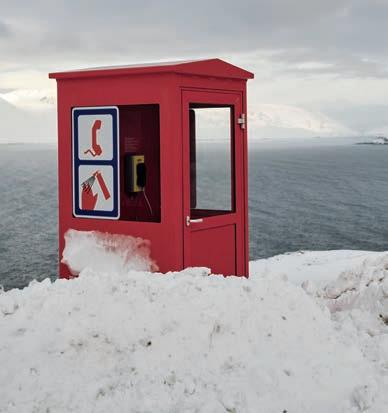





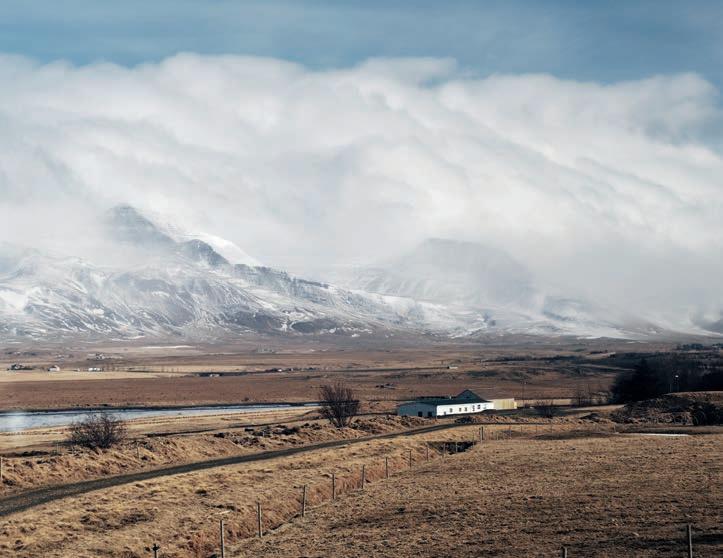
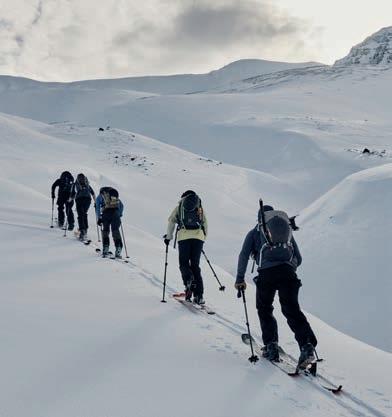
us are professional guides, we backed our knowledge and wanted to face up to a challenge. Fate intervened, however, when we arrived during what turned out to be the snowiest April in a century. It seemed we would have to swap our t-shirts for base layers, and sun cream for ice-axes.
Iceland’s unique geological features are no secret, and road-tripping the island isn’t exactly a unique endeavor, as a quick Instagram scroll will prove. Skitouring and splitboarding here, though, is less common – and probably for good reason. With a population density outside Reykjavik of just 1.5 people per square km, it’s a very empty place. The bulk of winter is harsh and dark, too, so your best bet is to visit in spring. In the right conditions, the landscape offers lots of skiable terrain, but since almost all of it remains undocumented, a DIY attitude is compulsory. Ever-changing weather and
its extreme northern latitude conspire to create aweinspiring natural light, and when compared with other European destinations like the Alps, the whole recipe makes for seriously rewarding adventure.
Just 35 miles outside Reykjavik we were forced to seek shelter behind a church as 70mph winds made further progress impossible. With lots of energy to burn and nowhere constructive to spend it, the group threw around various ambitious ideas until there was nothing left to do but have patience, re-check every forecast, and wait…
Lo and behold, on the third day we started crawling north at 30mph. A huge winter storm system was wreaking havoc across Iceland, forcing the closure of its famous Ring Road, but we pushed on using a vaguelypaved alternate route – partly because we had nowhere else to go, but also because we knew that without taking any risks, we were unlikely to see any reward.
After another 28 hours of grueling driving and sweaty-palms, we finally made it to Dalvik, the small town we’d picked out as a base for the upcoming weather window. Here we gained a sense of the snowpack (variable!) and familiarised ourselves with the local terrain, before a route was agreed upon for the following morning – a promising-looking gully above the nearby town of Ólafsfjörður.
From the moment we woke up we knew it was on: the calmest day yet, coupled with bluebird conditions. We made the short drive to a snow-free layby (which I’ll never take for granted again), slapped on some sunscreen and started a five-hour skin up to what felt

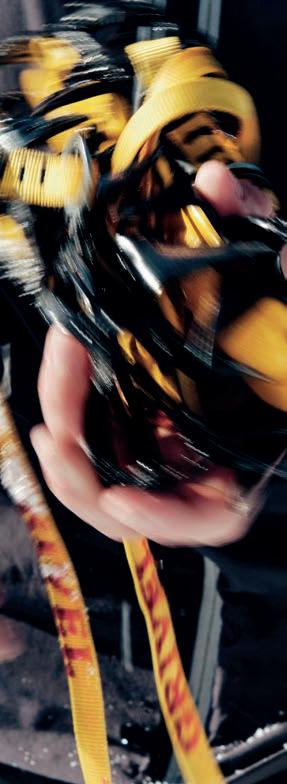

like the roof of Iceland. The final ascent snaked up an increasingly steep open face that eventually plateaued, and after multiple false-summits we took our lunch at the top. Aside from Iceland, there are only a few places in the world (including Japan, Alaska and Norway) where you can ski from summit to sea, so we savoured the 360-degree view of endless peaks plummeting into a deep blue ocean before transitioning our gear and preparing for the really fun part.
The rollercoaster theme continued, however, as we approached the start of our line – a massive gully mouth 950m above the glistening sea below. Bulletproof ice, and lots of it.
Liam Swanson volunteered to test the underfoot conditions, and after three big, committed turns, the deafening sound of his edges fighting with ice subsided. He stopped in a safe spot and bellowed back up that the snow just beyond the ice was “Perfect!”. The emotional pendulum was swinging once again, and the next hour was spent whooping our way down one of the most rewarding lines that any of us had ever had the privilege of riding. It ended just above the water’s edge, with a long traverse back along the coast to the campervans and a muchanticipated rendezvous with some cold beer and snacks.
At this point, the challenges we’d overcome so far –the planning, the weather, the mammoth drive – seemed like nothing; merely bumps on the road to nirvana. A natural hot tub on the beach was the next port of call, with a spot of (unsuccessful) fishing and a sunset to round out the perfect day. Exhausted, and with no more gas for heating or juice left in the leisure battery, we parked up in a small fishing village and slept like logs.
“WE SAVOURED THE 360-DEGREE VIEW OF ENDLESS PEAKS PLUMMETING INTO A DEEP BLUE OCEAN”


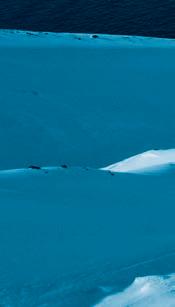


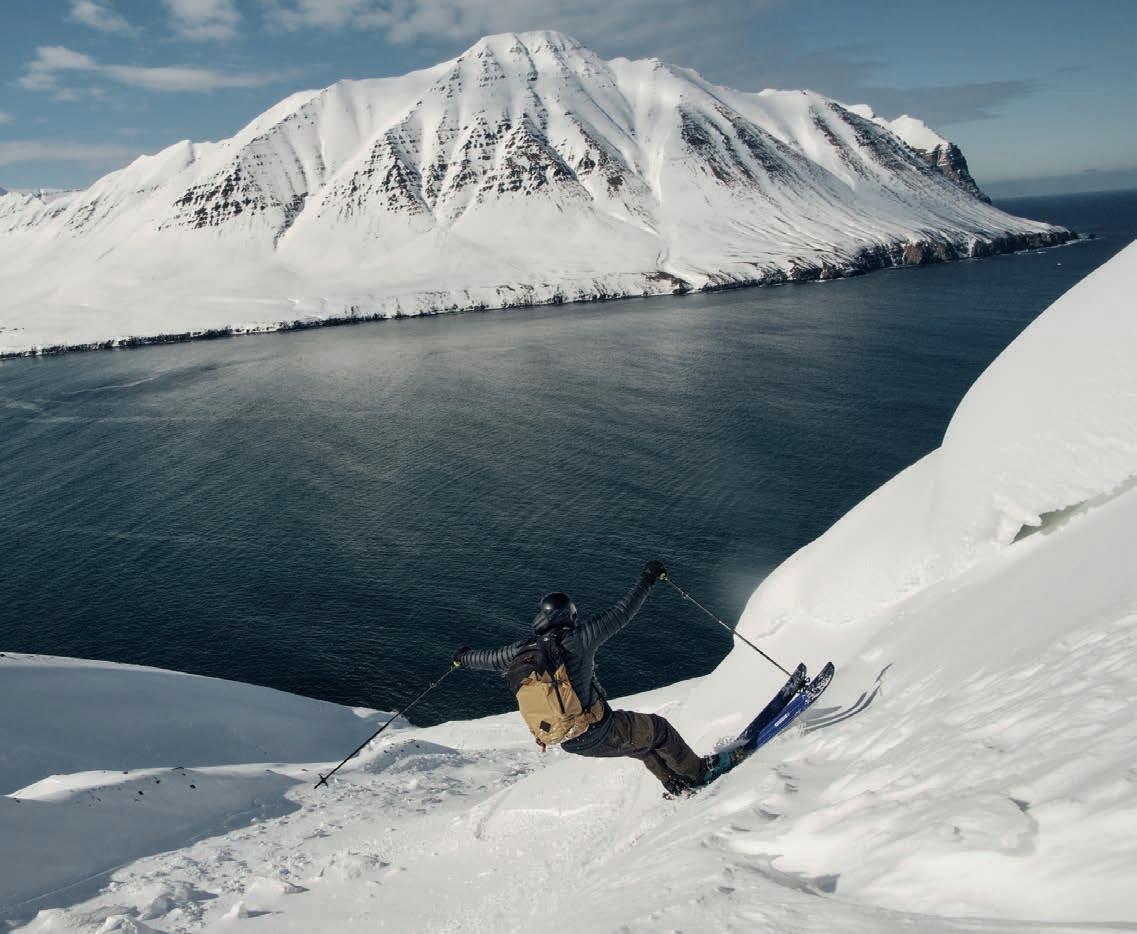


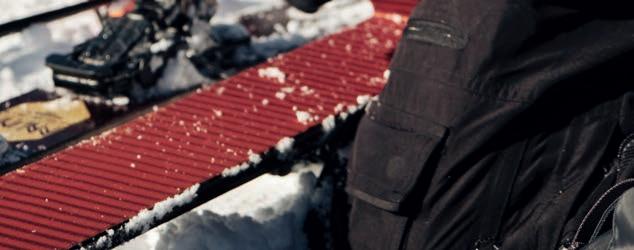


One of the attractions of Iceland was the chance to make just as much of the down days as the up days. And that’s exactly what we did as the next storm cycle rolled in – drinking beer while swimming in a 27°C waterfall, gazing at natural geysers and petting the many roadside horses. Some of our best skiing even came on what was otherwise a down day, when we explored a band of cliffs above our campsite in Akureyri. This zone provided us with some all-time powder laps right from the van, something that would have been impossible in normal spring conditions.
Outdoor sports can be spicy, and there are times when you reflect on your decisions and question if they were overly risky. Our Iceland trip seemed to strike the risk/reward ratio perfectly. You get old skiers, and you get bold skiers, but you don’t get old bold skiers. The power of nature was on full display out here in the North Atlantic, and the lesson of working with it – not against it – was driven home. Iceland’s vast landscapes with barely a soul in sight surpassed all of our expectations, and with so much terrain left to explore I really hope that this isn’t the last time we buckle up and test our luck in the land of fire and ice.
The adventure was undertaken by Angus Wauchope, James Spalding, Alex Lukas, Liam Swanson, Charlotte Hilliard and Angus MacKinnon, and supported by Ellis Brigham.
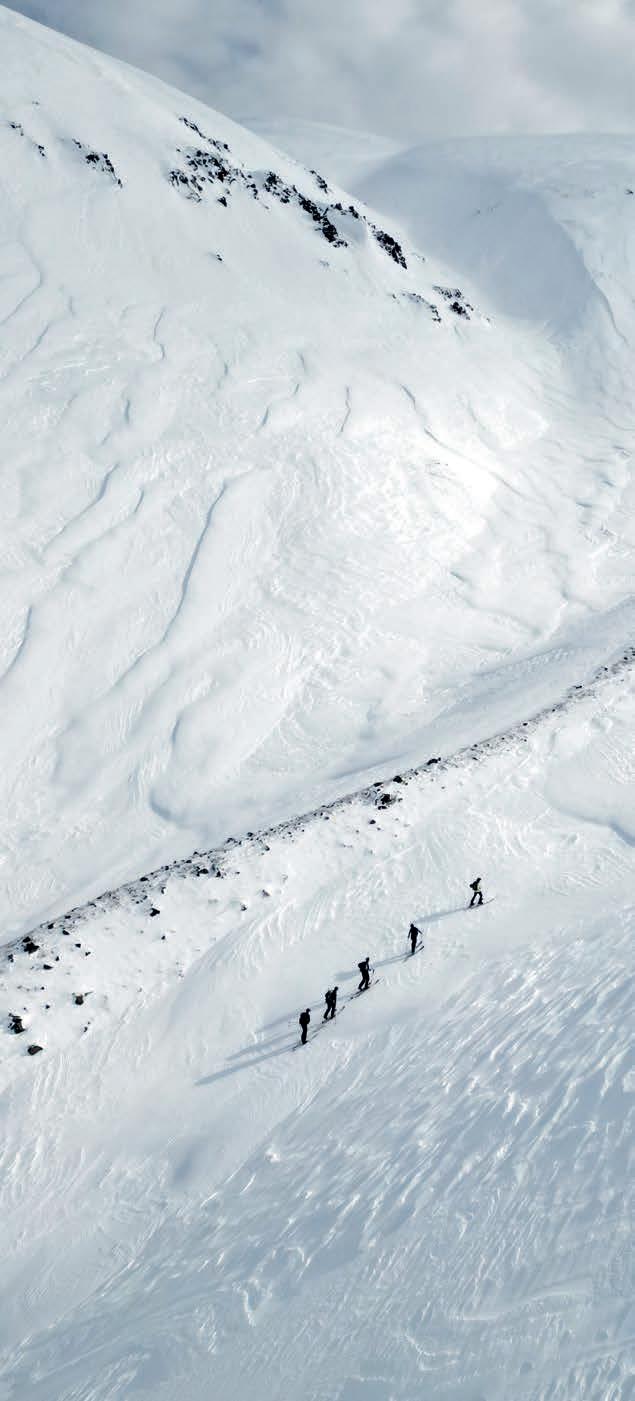







“ICELAND’S VAST LANDSCAPES WITH BARELY A SOUL IN SIGHT SURPASSED ALL OF OUR EXPECTATIONS”

Salomon Shift Alpha BOA 130 GW
Price: £700 Weight: 1,800g
Mastering the uphills and blasting through the downs, the Shift Alpha brings freeride skills to alpine enthusiasts, resulting in a potent all mountain boot. The BOA ® Fit System allows small adjustments and tweaks for both modes, while the FreeSpine links the cuff and shell for more power and control in the toughest conditions.

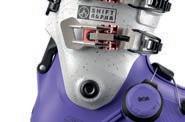


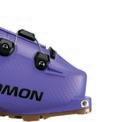


SHOP THE RANGE


Ortovox Diract Voice
Price: £340 Weight: 210g
Intuitive and easy to use, the Diract Voice avalanche transciever adds voice navigation to the mix. Clear spoken instructions guide you through every phase of a search, facilitating a calm and effective rescue. An extra-large full-graphic screen and Smart Antenna Technology ensure this is the tool you want in an emergency.

Ortovox Avabag Litric Tour 30
Price: £1050 Weight: 2,410g
This version of Ortovox’s electronic avalanche airbag is designed specifically for ski touring, with a 30 litre capacity and dedicated storage for a shovel and probe, It also features attachment points for skis, snowshoes, ice axe and helmet. The airbag itself inflates in four seconds, and will do so twice from one 25-minute USB-C full charge.

Oakley MOD BC
Price: £220 Weight: 450g

Oakley’s trademark style meets backcountry substance in the form of their MOD BC helmet. Protective systems like Mips, Twiceme, and RECCO are all included, as is the separate peaked beanie that makes this such a flexible solution. It dispenses with heavy and hot built-in padding, and allows quick changeovers at the summit.
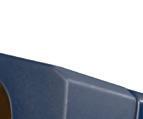



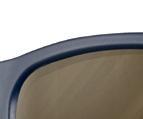

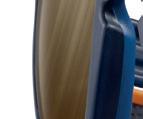
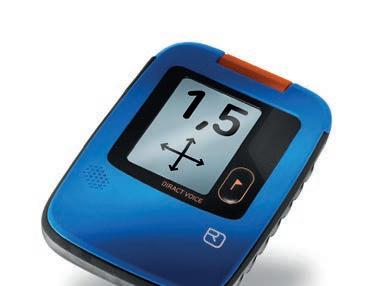





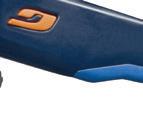
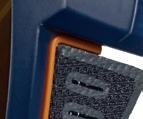



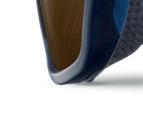



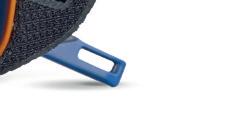

Julbo Shield Reactiv
Price: £220 Weight: 32g
Proper mountain glasses are an essential piece of kit, and the Julbo Shield ticks all the boxes. Reactiv 2-4
Polarised lenses adapt to brighter conditions automatically, while the removable Spandex Shields prevent light entering from the side. There are built-in vents to prevent fogging too.




























Norrøna Lofoten GORE-TEX 3L
ellis-brigham.com
Price: £549 Weight: 720g
This high-spec jacket from Norwegian brand Norrøna features recycled fabrics and the new PFAS-free membrane technology from GORE-TEX. Expect all the details you’d want for off-piste adventures, including a carefully articulated fit, a removable powder skirt, helmet-compatible hood and two-way venting zips.





Nordica Unlimited 94
Price: £620 Weight: 1,670g
Based on Nordica’s award-winning Enforcer ski, the Unlimited 94 brings extra capability to the climb. It’s lightweight enough to enjoy the uphill, but with plenty of performance in the descent.
An early rise tip and tail rocker with traditional camber underfoot is married to a wider waist for confidence and control across the mountain.
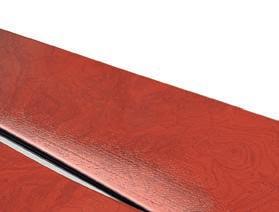

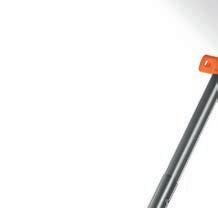






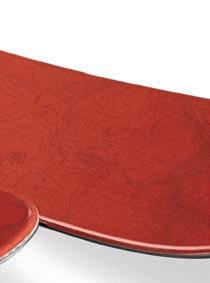
Ortovox Carbon 240 Superlight probe
Price: £95 Weight: 185g
A superlight carbon probe, the Carbon 240 breaks down into seven compact sections and has a durable aramid tensioning system. Clear numbers and coloured markers help you to quickly ascertain the burial depth, while a large probe tip improves penetration. This is quite simply a backcountry essential.
Norrøna Lofoten GORE-TEX 3L
Price: £499 Weight: 718g
Ortovox Pro Light
Price: £80 Weight: 440g

Very light but durable, the Pro Light shovel packs in the technology. An anodised hardened aluminium blade features cut-out notches and stiffening ribs for minimal weight, while the telescopic shaft and left/right hand adaptable T-grip pack down well but still offer good grip when in use.
Just like the Norrøna jacket on this page, these freeride pants feature GORE-TEX’s newer, environmentally friendly ePE waterproof membrane. Highly durable, articulated, and equipped with backcountry-friendly details, they have an almost cult-like status among ski guides and those who live and work in the mountains.












Head off on holiday to a big resort, with a big reputation, and you know what you’re getting. But if you want to avoid the crowds – and the high prices – it’s worth looking beyond the likes of Vail, Verbier or Val d’Isère. Tristan Kennedy recommends six destinations that will take you off the beaten piste.

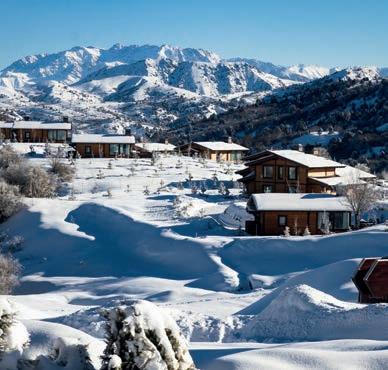
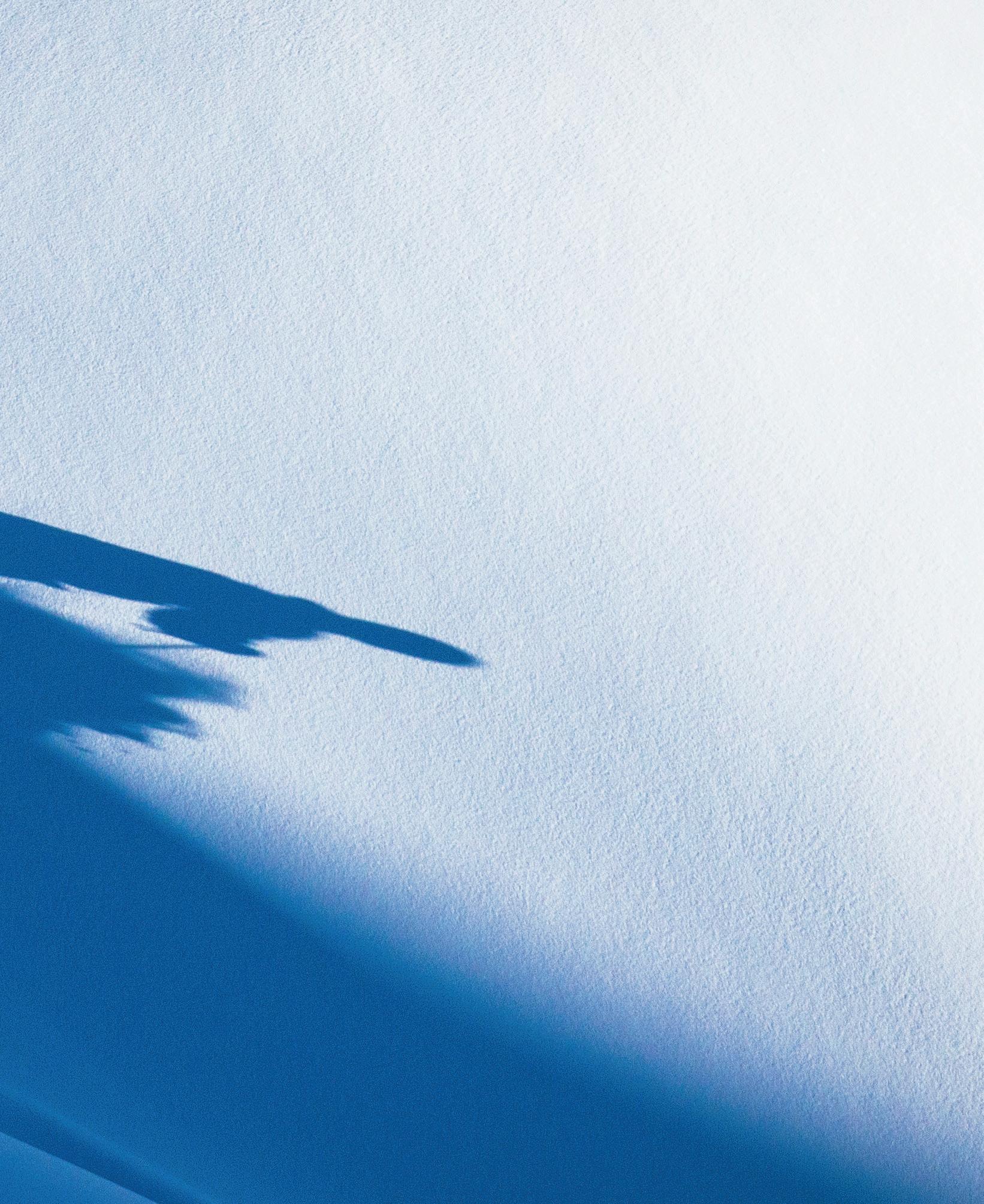
Uzbekistan might not be on your ski holiday bingo card, but it should be. As one of just two ‘double-landlocked’ countries in the world (the other being Lichtenstein) it’s about as far from the sea as you can get. This means the snow that falls in the Tien Shan mountains is famously dry, and stays light and fluffy for days after a dump.
Built in 2019 at a cost of £75 million (and still being enlarged when EXPLORE visited) Amirsoy brings European standards of skiing, slope-grooming and safety to Central Asia. The businessman behind it poached the resort manager from Courchevel, installed French-made lifts, and employed European department heads to train the local crews in every aspect of on-hill operations. His plans for this place are big, the lift-accessible terrain is epic, and with the government abolishing visa requirements, investing in modern high speed trains and opening up to tourists, now is a brilliant time to visit.

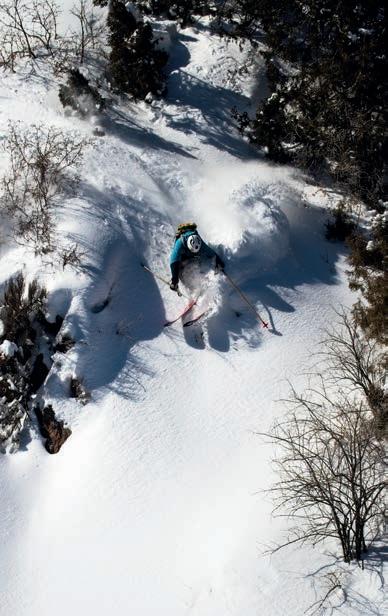
Sandwiched between the 5,000m peaks of the Caucasus and the eastern shores of the Black Sea, the Svaneti region of Georgia has always benefited from epic snowfalls. But it’s only in the past 15 years that the infrastructure has been put in place for skiers to really make the most of it. In 2011, the Georgian government installed the first new lifts above the ancient town of Mestia, in a place called Hatsvali. In 2016, they added a second set of lifts about half an hour further away, beneath the glaciated 4,858m high Tetnuldi.
This resort, which takes its name from the mountain, only has about ten runs, but the backcountry area accessible from its five lifts is vast. In 2024, it hosted the Freeride World Tour – an event that’s set to return for the next three years at least. Down in Mestia, a range of modern hotels and guesthouses have sprung up catering for all tastes and budgets. But crucially, the place still maintains some of its frontier feel. The food is incredible, the people are welcoming, and the roads are still terrible – but that’s all part of the fun.
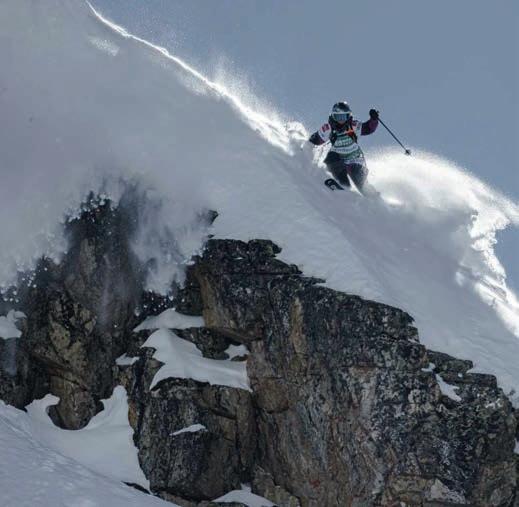
“THE ROADS ARE STILL TERRIBLE – BUT THAT’S ALL PART OF THE FUN”

The Monterosa Ski Area has been called ‘Italy’s answer to Les Trois Vallées’, but the whole area is much more low key. There are fewer lifts and fewer pistes, but also far fewer crowds, and prices that start at 38 euros for a day pass if you book in advance (compared to 79 euros for the Trois Vallées). Best of all, in the easternmost of Monterosa’s three valleys is the village of AlagnaValsesia. This small traditional town, 1,200m above sealevel, has only a handful of hotels and restaurants – but it sits beneath some of the best lift-accessible freeride terrain anywhere in Europe.
Catch a gondola, a cable car and then a chairlift, and you’ll quickly find yourself at the top of Indren, one of the highest lift stations anywhere in the Alps, at 3,275m. From here, the mountain is your oyster. You can ride red runs down into the neighbouring valley, scream back down towards Alagna itself on one of the continent’s longest pisted descents, or better still, explore the backcountry. They don’t call it ‘Alagna: Freeride Paradise’ for nothing.

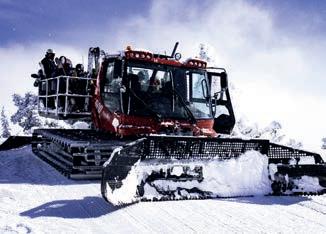
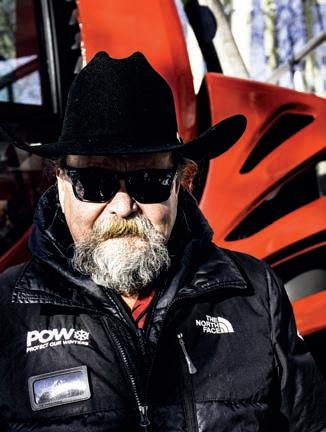
For years, Powder Mountain was what Americans call ‘a mom and pop resort’. The ski area is massive by US standards, but with fewer than ten lifts, locals had to get innovative to access it. An old school bus would pick folk up at the bottom of some powder runs, and snowcats were used to ferry people to the peaks. It was a popular weekend destination for people from nearby Ogden (pop: 86,000) who would ski for a while before sinking a few pitchers at the on-site bar (inevitably called the Powder Keg). But it was little known outside the local area. Most visitors to Utah headed to the better-known, more upmarket resorts further south, like Park City, Brighton, or Snowbird.
Then in the early 2010’s, a group of tech investors started visiting. Having fallen in love with the terrain (much of which is unpisted) and abundant snow that gives the place its name, they clubbed together to buy it in 2013, when the ageing owner was looking to sell. Last year, it changed hands again, so it’s now owned outright by Reed Hastings, the co-founder of Netflix. Plans are afoot to update some of the older lifts, and install some in new areas. But Hastings has also promised not to mess with PowMow’s vibe too much – which makes sense, because it’s what made it worth visiting in the first place.


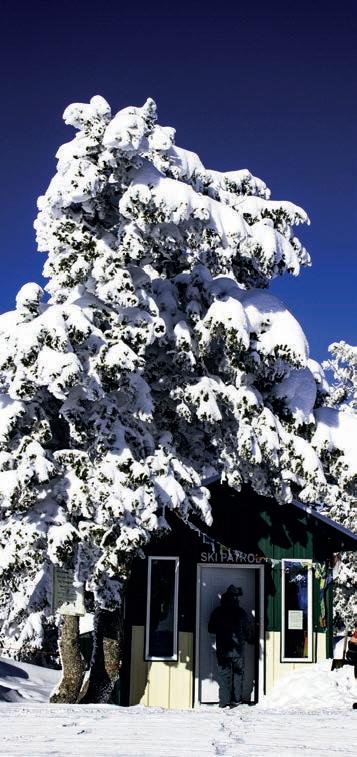






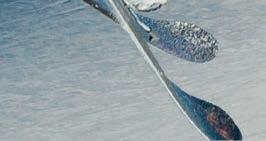





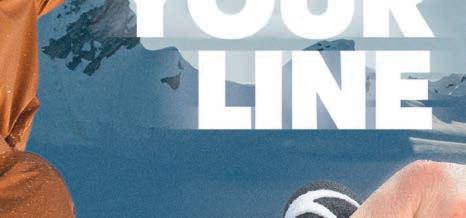
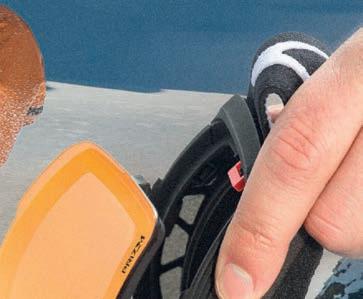





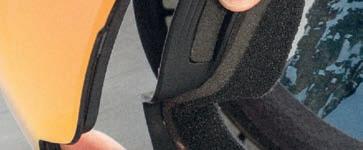











We’d call Grimentz a hidden gem, but a) that’s a horrible cliché, and b) it doesn’t really do justice to the place, which is a full-blown Koh-i-Noor diamond of a resort that is still – somehow – overlooked. In part, this has to do with its location. Grimentz sits between two vastly more famous neighbours, Verbier and the 4 Valleys to the west, and Zermatt to the east. It benefits from the same consistent weather systems as these two and boasts similar high altitude terrain. Yet because it has a fraction of the name recognition, it attracts a fraction of the crowds.
Much of the ski area is above 2,000m, making it relatively snow sure. And although the 115km of piste isn’t enormous, the off-piste is epic. There are several long, north facing descents, which hold their snow for days after a dump. Nothing in Switzerland is cheap but prices down in the village compare pretty favourably to elsewhere; the lift passes won’t break the bank either.
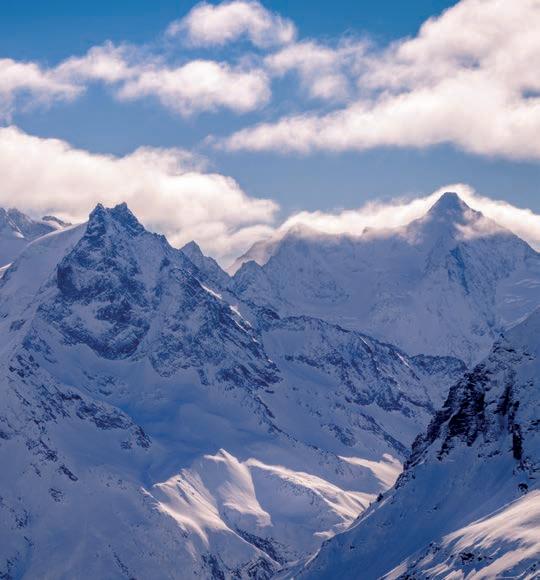

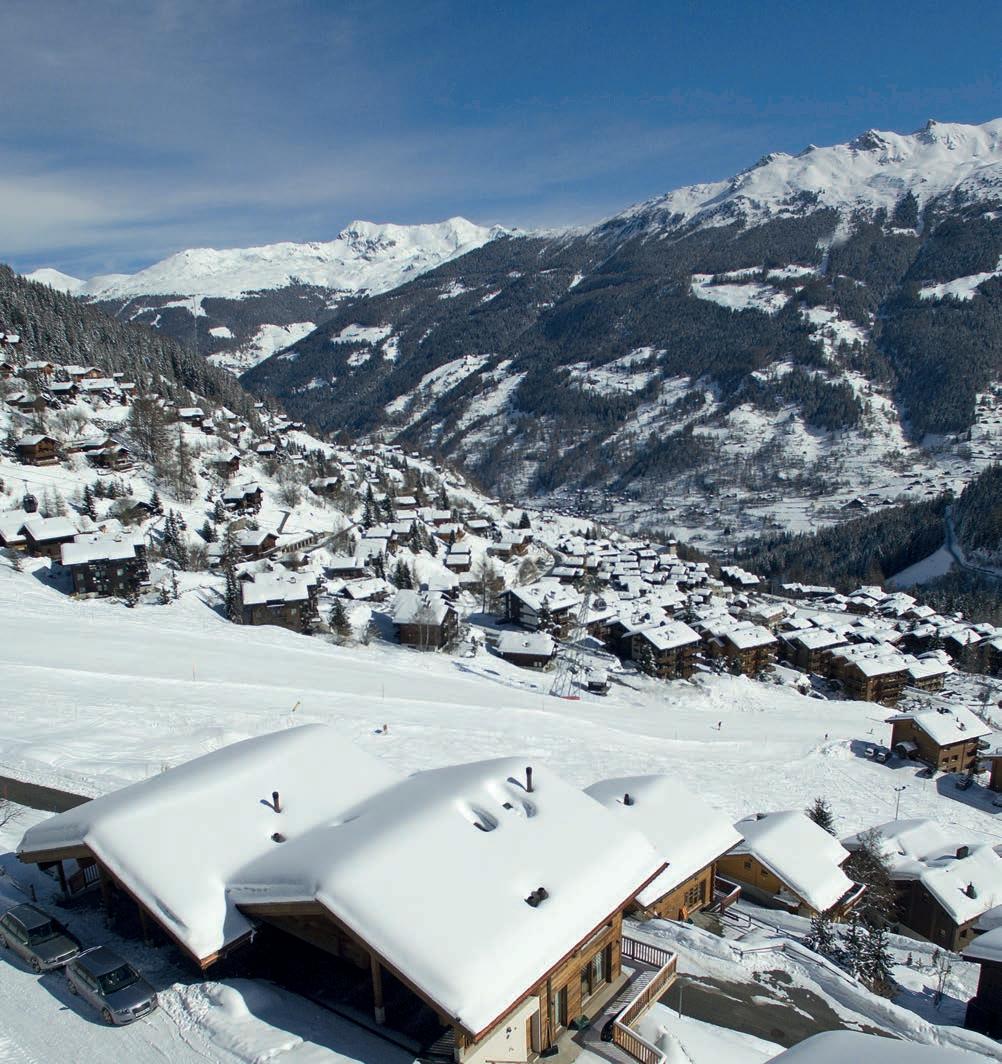

Despite sitting in a prime location in one of America’s most famous skiing states, Silverton has remained determinedly under-the-radar since it first opened in 2002. The ‘resort’, such as it is, consists of a single chairlift, which takes you up to a long ridge, from where you hike to a wide range of epic, un-pisted runs, all of which funnel back down towards a central run-out. Follow that to the end of the valley, get picked up by the shuttle bus, and you’re off again.
Numbers are capped to ensure the hill never gets too crowded. And because most people ride with a guide, they can ‘farm’ the snow pretty effectively, making sure no single area gets overly tracked. This means you’re all-but-guaranteed fresh turns, even days after a dump. Silverton itself is an old mining town, and while there are a few concessions to modernity (including upmarket, refurbished hotels, and an award-winning craft rum distillery) it’s lost none of its original charm.

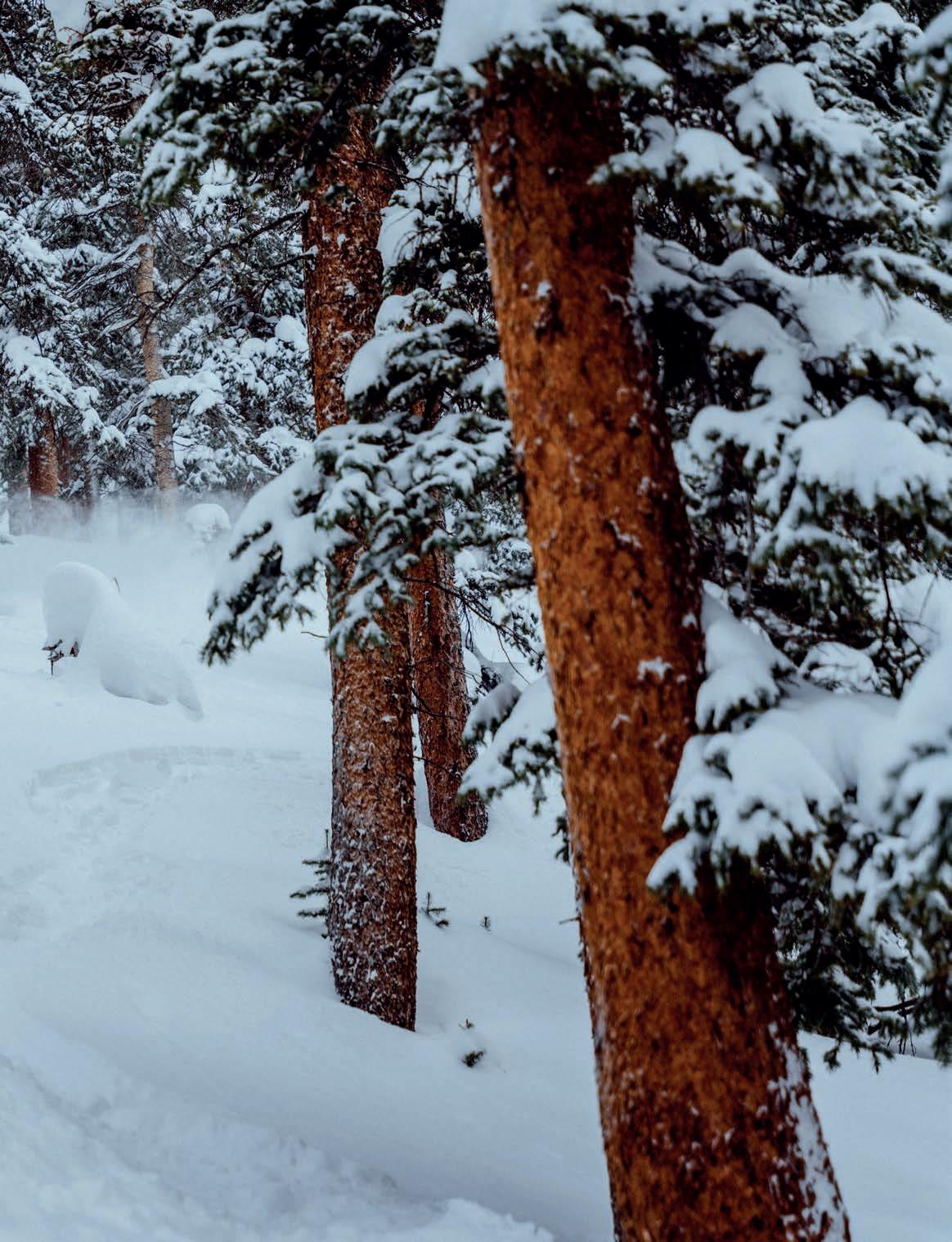

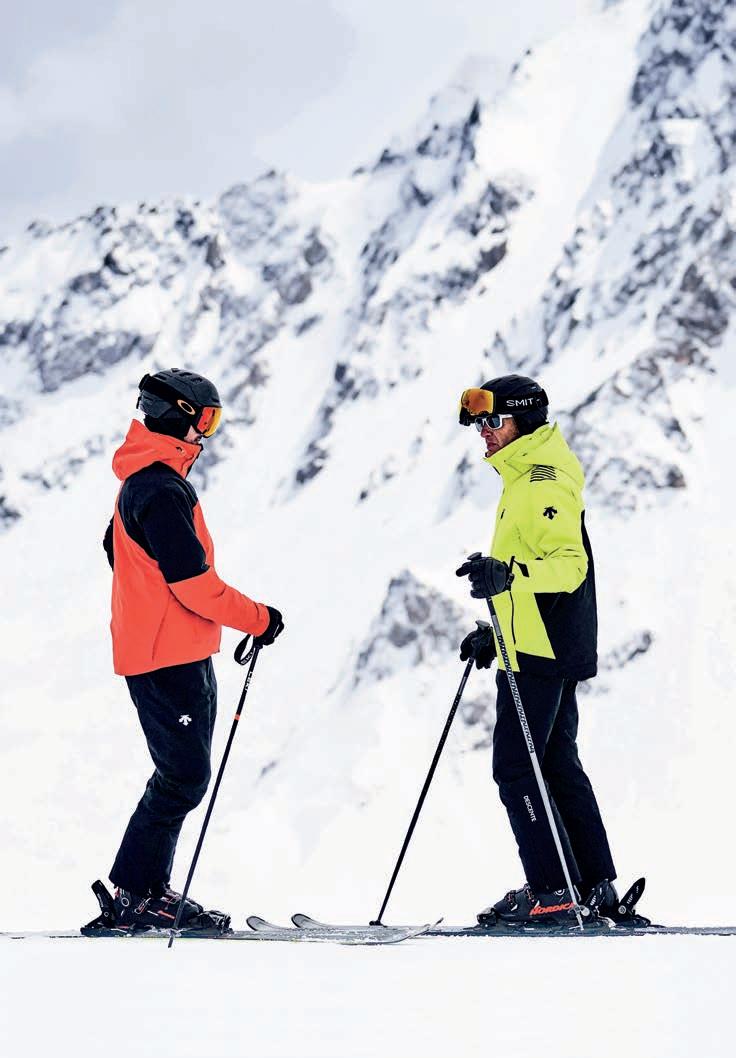

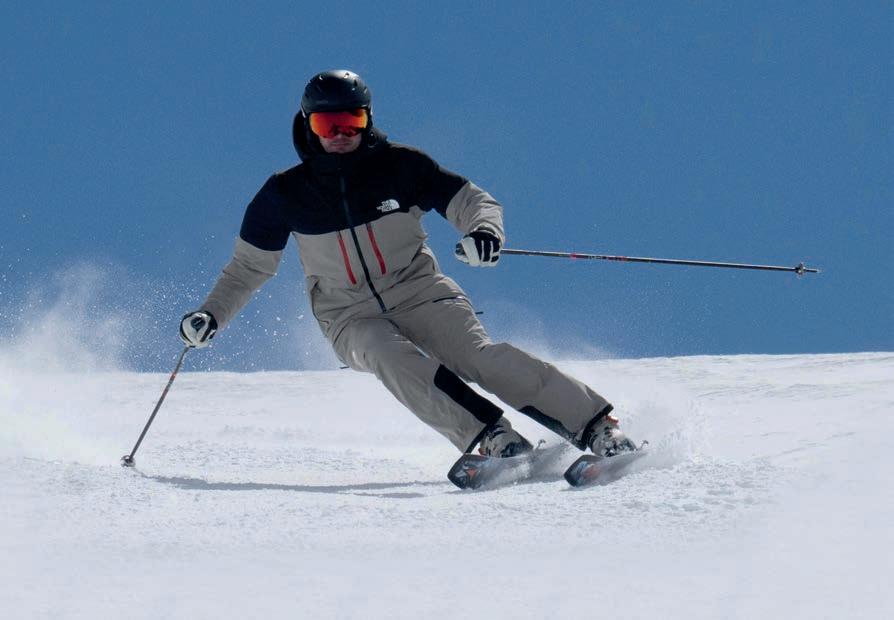





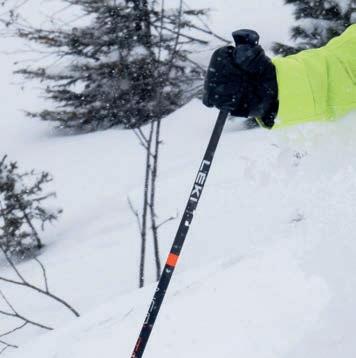
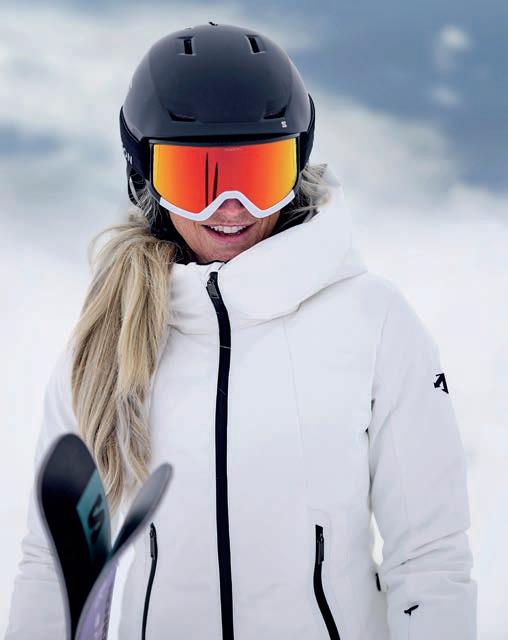
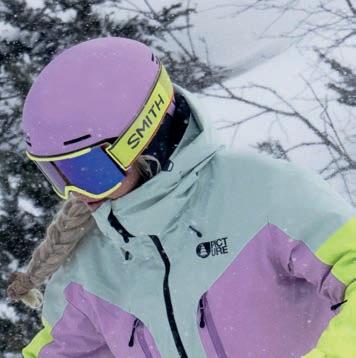

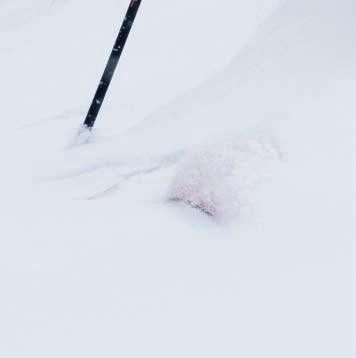
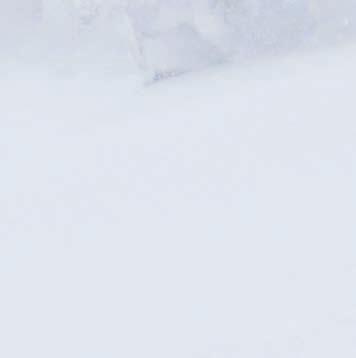


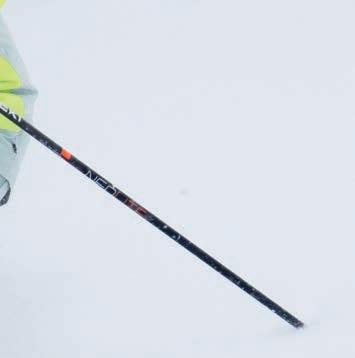




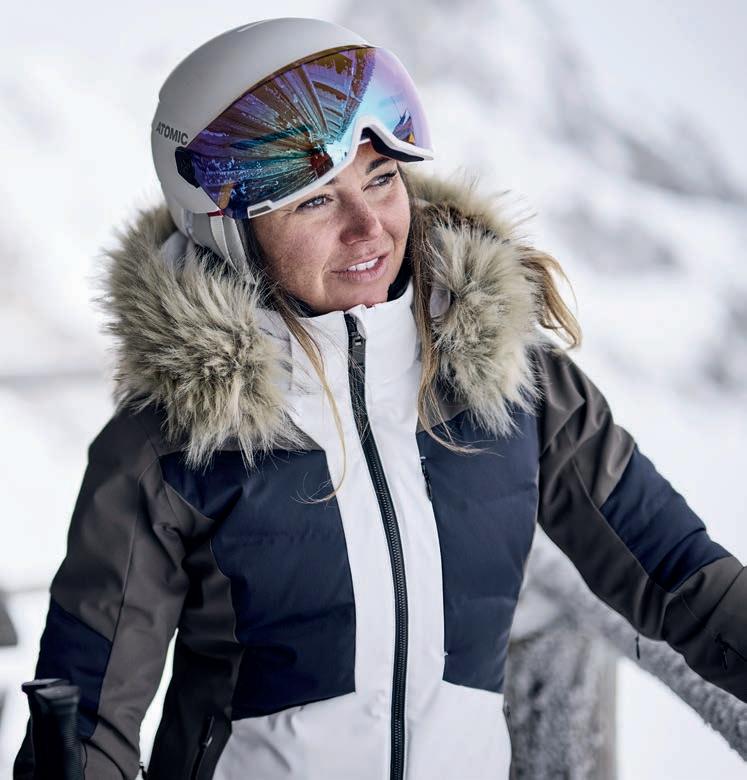
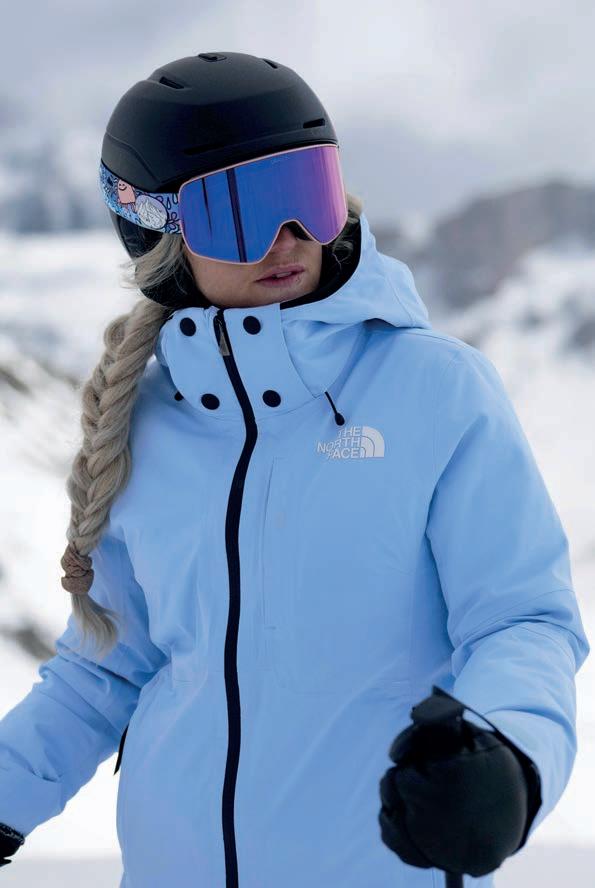

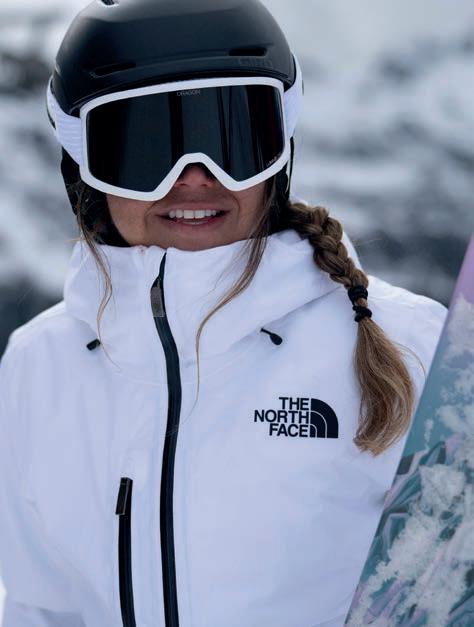
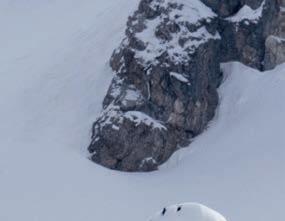
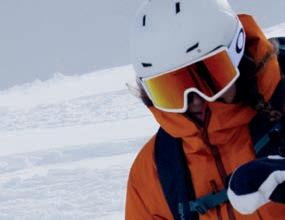
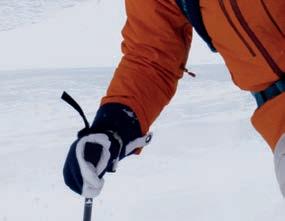


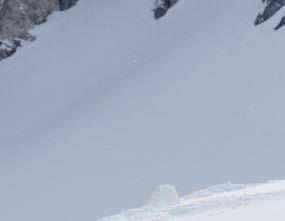
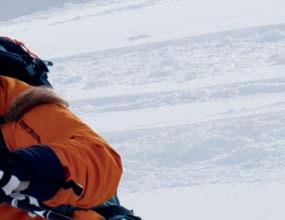
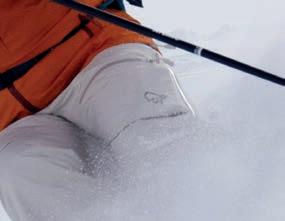
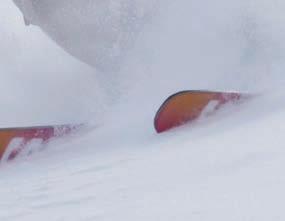

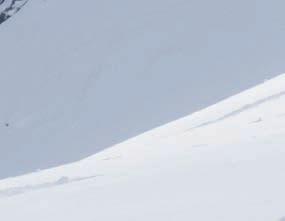




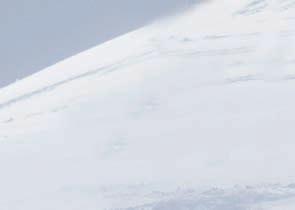
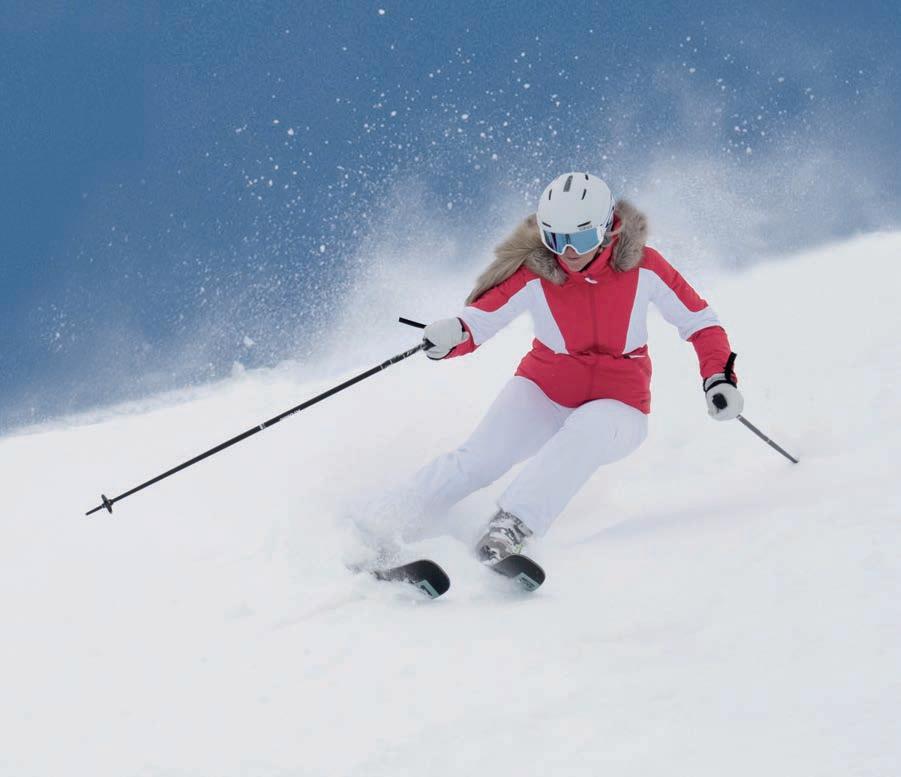

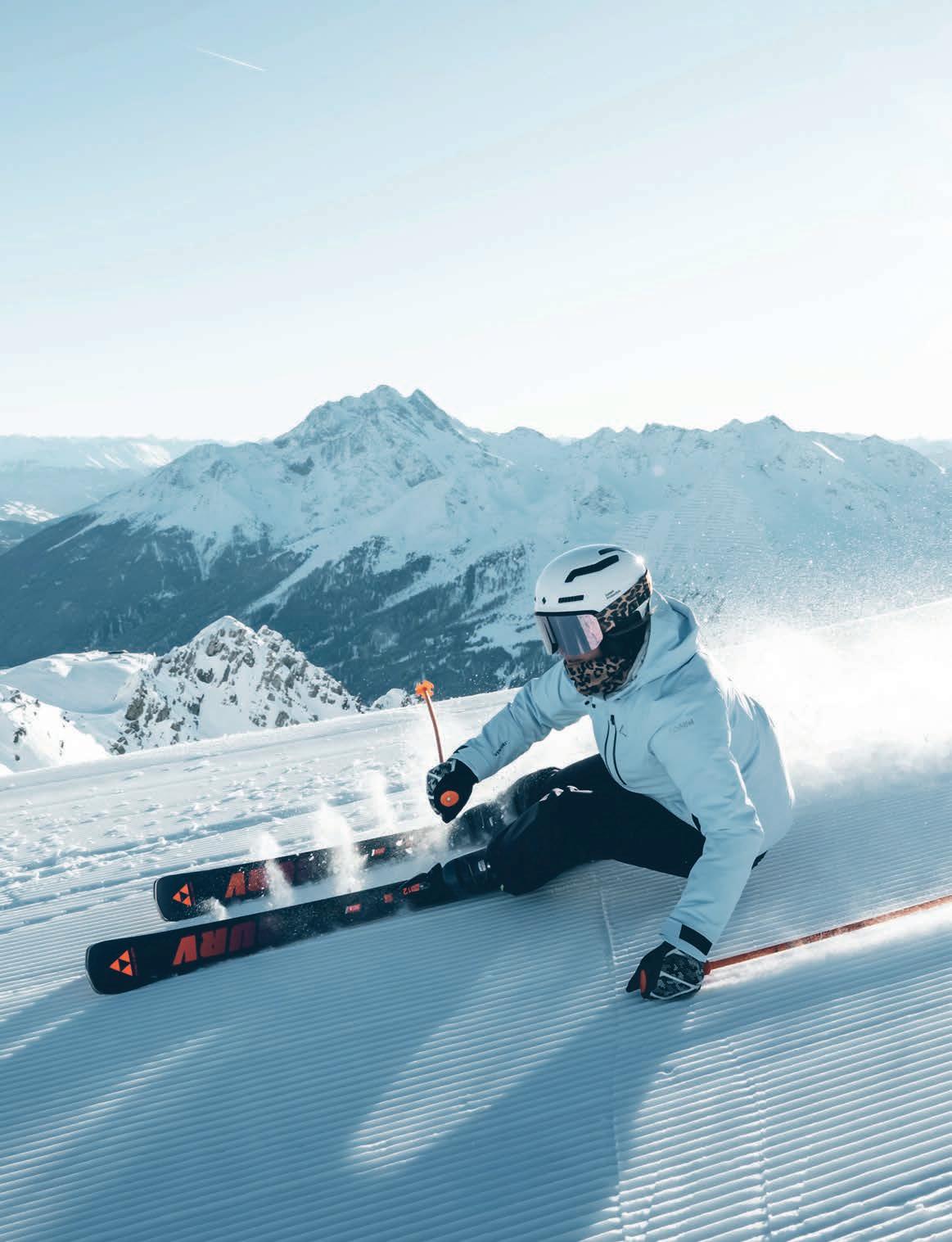


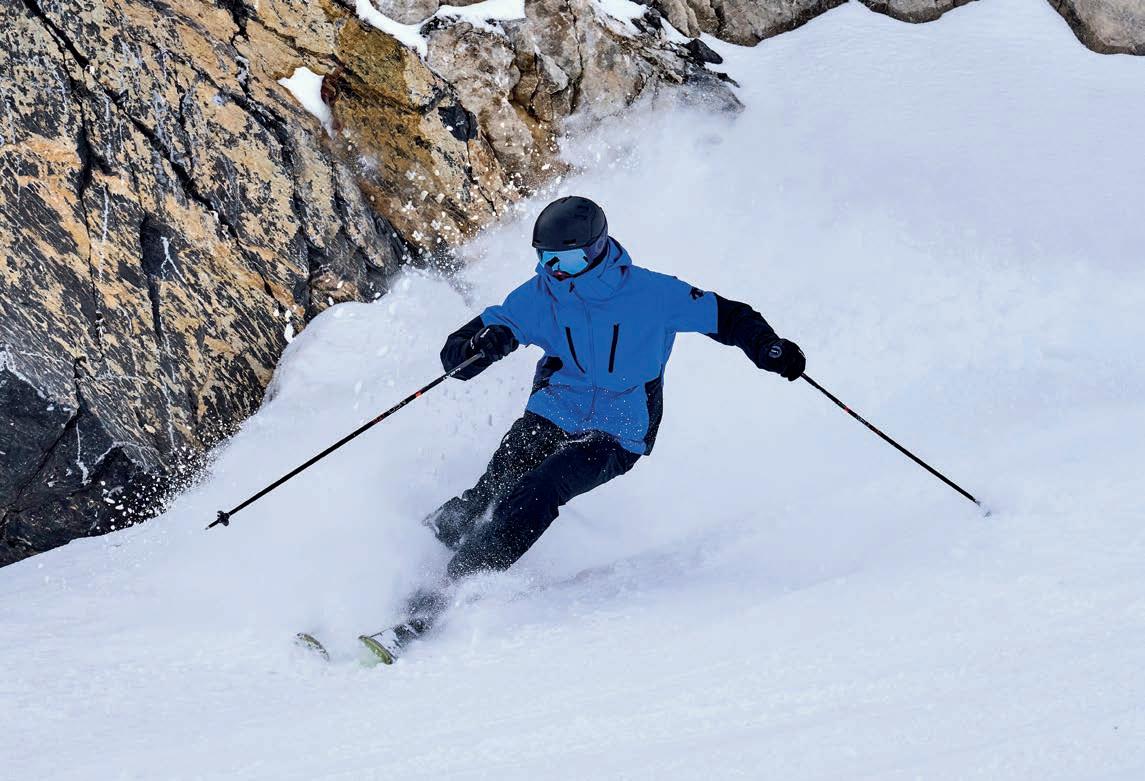


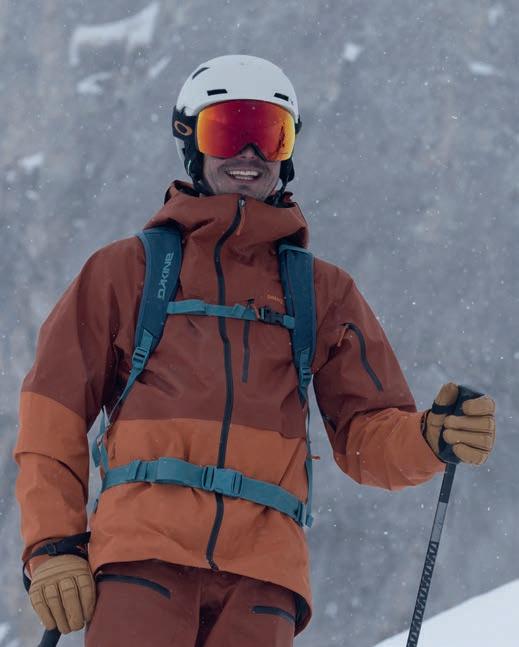
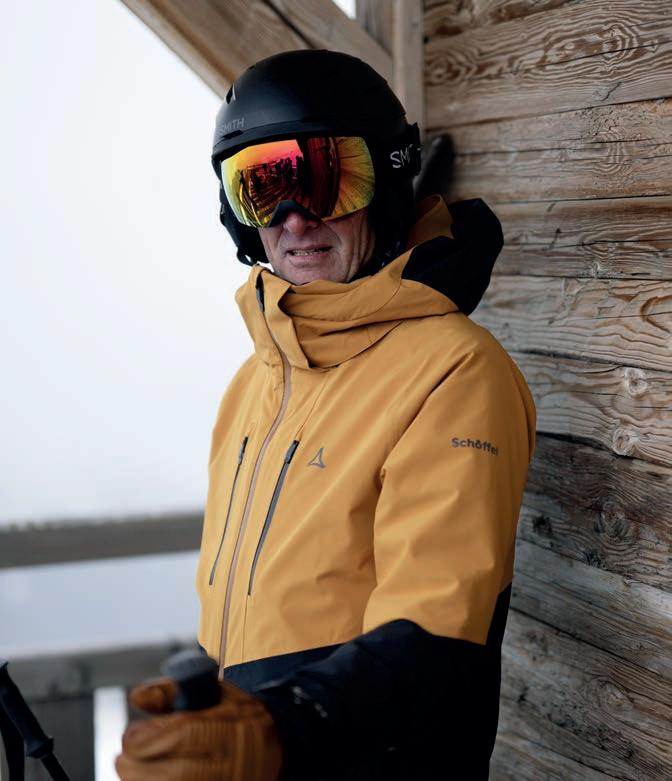
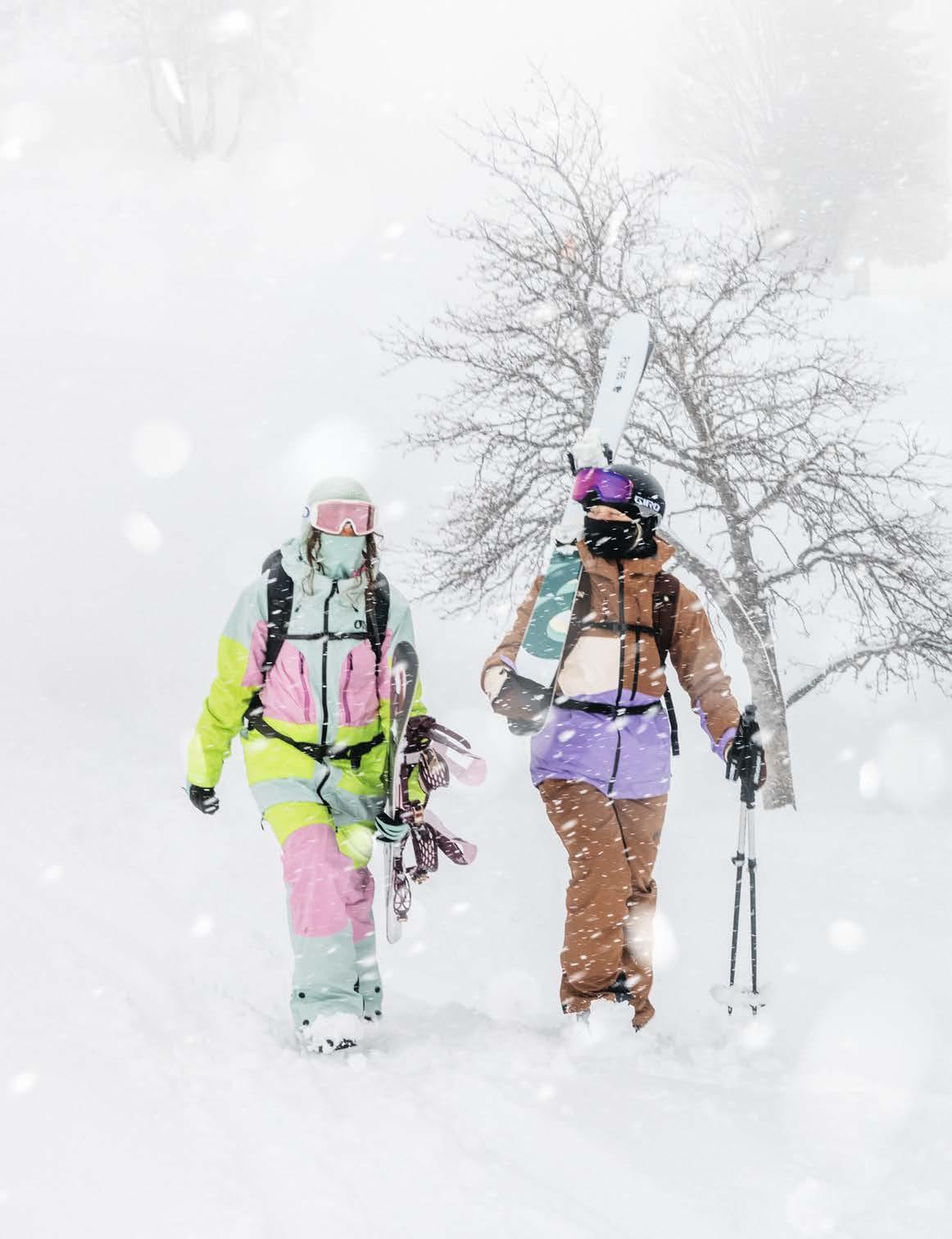


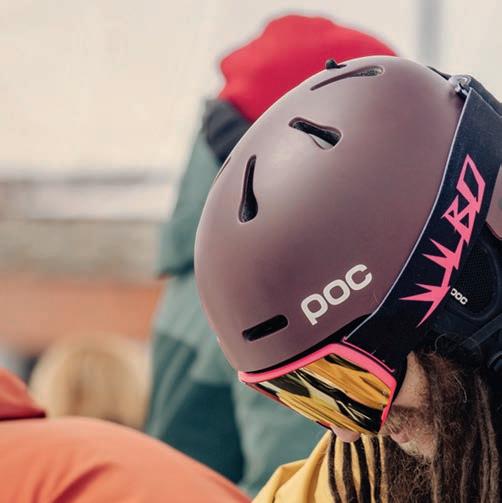


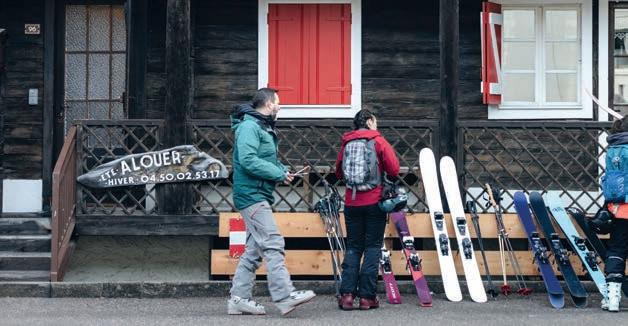
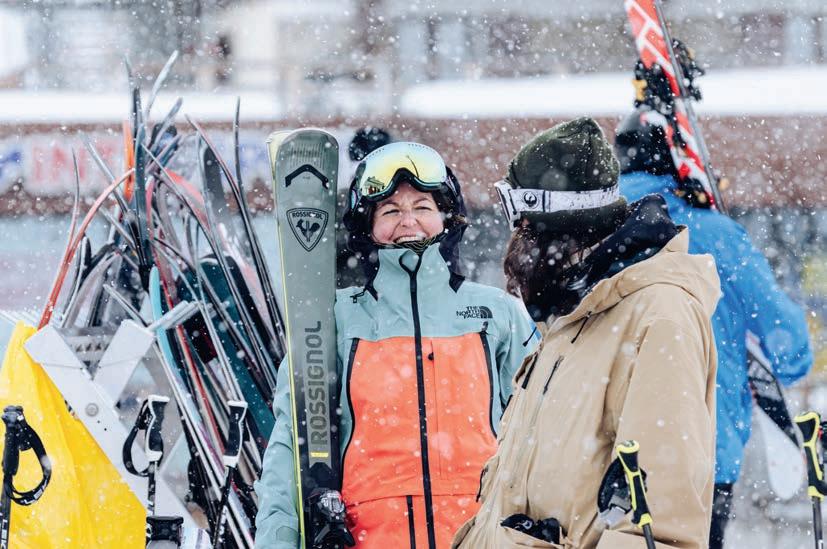
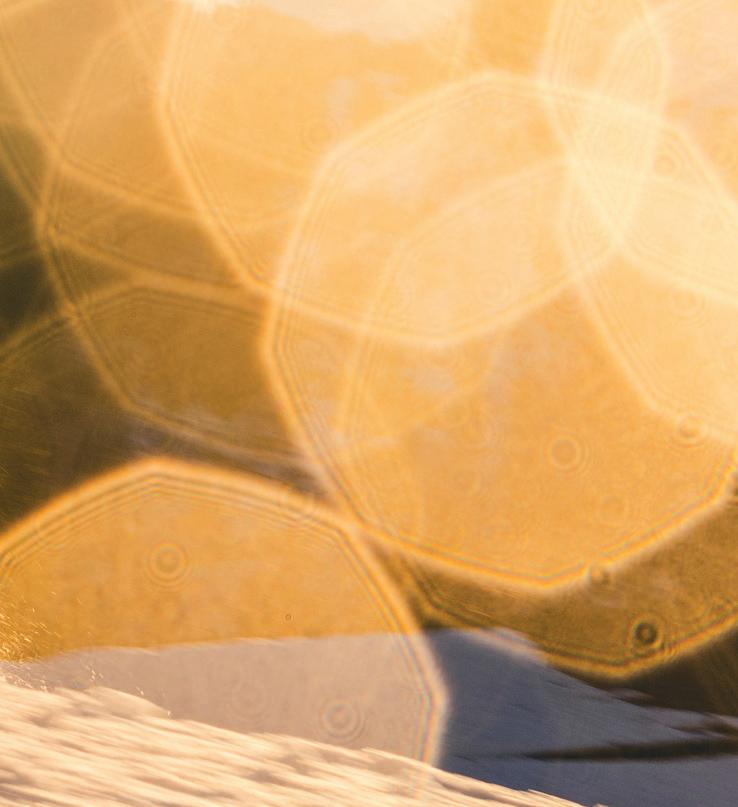
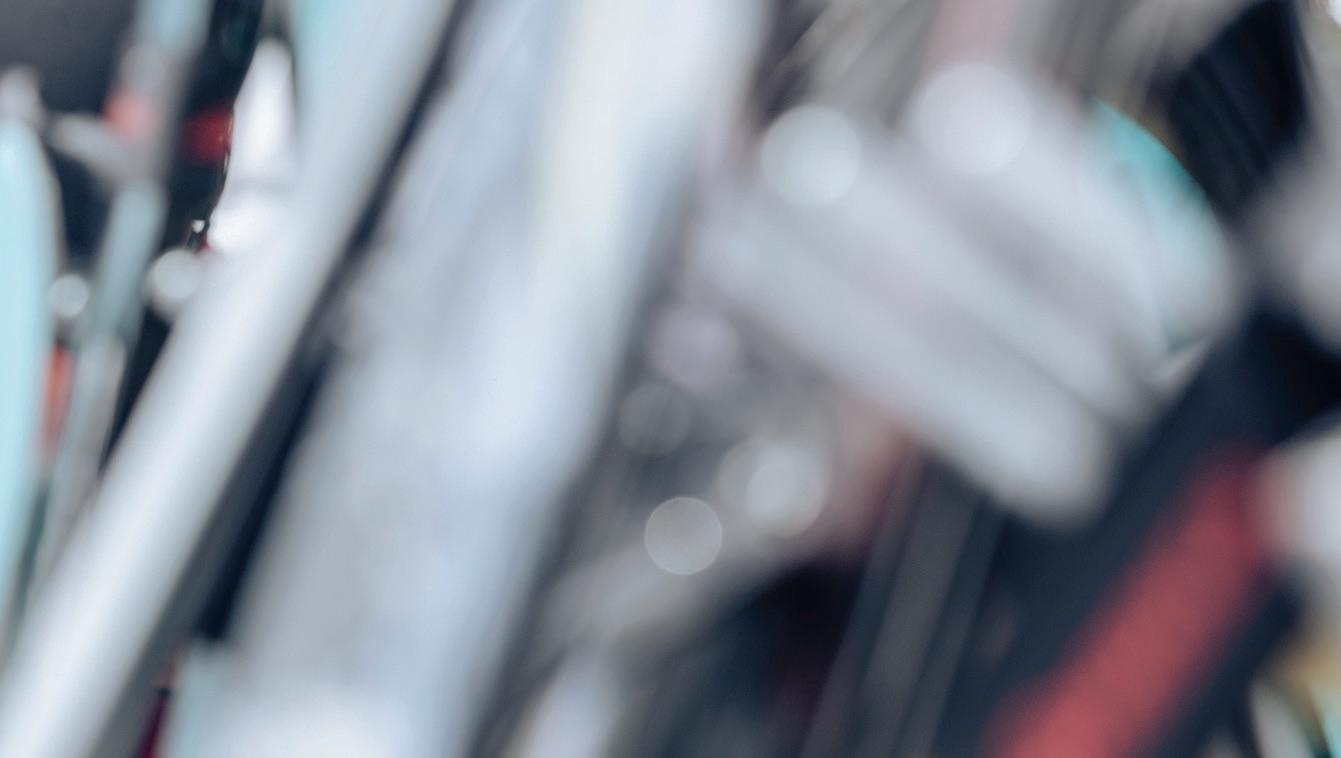




We catch up with the UK’s longest-serving ski buyer (oh what a fate!) to find out what goes into selecting the skis you’ll see in Ellis Brigham stores across the nation this winter.

“There’s no such thing as a rubbish ski,” says Ski Equipment Buyer, Steve Wells. “When you’re testing skis you have to think, why do you not like it? The ski might not suit you, but it’s going to suit somebody.”
Testing skis is a tricky business. Was the snow a little softer last run? Did you have more energy on the first run of the day? Is the tuning a little off ? Or is that vin chaud from lunch starting to take effect? These are just some of the factors that the ski team consider throughout the season as they make their selection for the following year’s lineup.
Every winter, this group of knowledgeable skiers is sent all over Europe to test out the latest offerings from the world’s best known brands. By the time they begin the process at the UK ski industry’s test in La Clusaz each January, they’ve already got a good idea of which skis they will put through their paces. Mapping out a matrix of brands, levels and prices, they decide which models will fall into which category (piste, allmountain, freeride…) to give customers a varied choice that’s not too overwhelming.
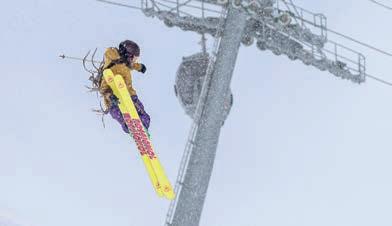
Photos Marcin Wiklik
Ellis Brigham also take a bunch of staff to Tignes at the end of the winter to help validate the decisions they’ve made, and then put on a larger staff test at Tamworth ahead of the next season for shop staff to familiarise themselves with the range. Finally, they keep a keen ear to the slopes, paying attention to which skis are getting well-reviewed by the online media and other online users, and taking feedback from customers at their indoor tests.
For Steve, who’s been at Ellis Brigham for 23 years, the skis that do make the cut must have three things: “One, it’s got to ski well. Two, it’s got to have some sort of shelf appeal, like a cool topsheet or a new bit of tech. And three, the price has to be justifiable. There’s no point stocking a really good intermediate ski that costs the same as an expert level ski because no one’s going to buy it.” The team make sure to test the skis in all conditions, on all kinds of terrain, on all colours of piste. They also bring a variety of different skiers out to the test because it gives them a broad perspective. They ensure that everyone gets in the habit of trying out each ski at different speeds and using different turn shapes to see which model will fit a category best. “Anyone who skis down and says, ‘That ski was s**t’ instantly owes drinks. There’s nothing wrong with not liking a ski, the skiers are not there to pick out their favourites, they’re there to pick a ski and work out who is going to love that model, ‘This is a ski for an intermediate who prefers shorter, stress-free turns on piste.’”
At the end of the Tamworth test, Steve likes to check in with the staff to find out which skis have impressed them. “I don’t think in the ten years of doing that test, there’s ever been a consensus. It blows my mind how many skis get mentioned, and it just reinforces to me that there are different skis for different skiers.”
So, while Steve fully admits he hasn’t bought a pair of skis since 2004 (he’s got far too many skis to try out each season!) he thinks the best – and sometimes most unexpected – thing about investing in your own pair of skis, is not just having a pair that suits you, but becoming well acquainted with them. “When you own your own skis, the second week you go away with them, you’re not learning how to ski them again because you already know exactly what the ski does. So away you go.”
And if he had to choose a ski for his holidays this season? “I’m a bit of a lazy skier. So I want a ski that’s not going to punish me. The Blizzard Anomaly can go in
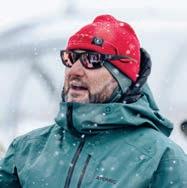
Name: Steve, 50
Job: Buyer and Operations Manager
Skiing since: 13
Preferred terrain/style:
Lazy all-mountain skier, loves fresh snow and finding new terrain.
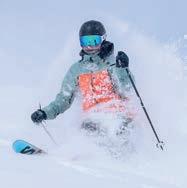
Name: Jen, 33
Job: Boot Fitter and Ski Equipment Team
Skiing since: 5
Preferred terrain/style: Piste cruising, trees and pushing herself in fresh snow. Just started touring.
any conditions, but at the same time – when I’m having one of those days where everything just clicks – I can just about keep up with all the good skiers around me.”
So, next time you head in store and see the wall of skis in front of you, rest assured that it wasn’t just marketing and business deals that got those models onto the rack. Steve and his team’s selection is carefully curated for Ellis Brigham’s customers and each ski has earnt its spot. With one of the broadest collections in Europe, there’s sure to be a pair waiting for you this winter.
“SKIS

Name: Luke, 45
Job: Buyer and Operations Team
Skiing since: 5
Preferred terrain/style: Much prefers powder and off-piste, doesn’t enjoy hardpack skiing.
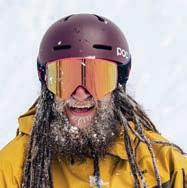
Name: Alex, 38
Job: Boot Fitter and Ski Equipment Team
Skiing since: 9
Preferred terrain/style: Grew up racing and doing seasons, enjoys everything from fast turns to jumps.
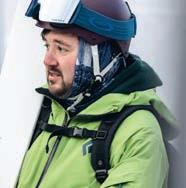
Name: Joe, 30
Job: Boot Fitter and Ski Equipment Team
Skiing since: 12
Preferred terrain/style: Freeride, freestyle and looking for powder – the deeper the better!
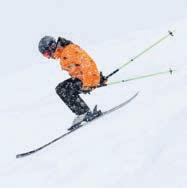
Name: Mark, 40
Job: Ski Equipment Trainer
Skiing since: 14
Preferred terrain/style:
Ex-sponsored freestyle skier. Loves to ski fast and find open powder bowls.
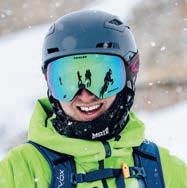
Name: Toby, 34
Job: Boot Fitter and Ski Equipment Team
Skiing since: 5
Preferred terrain/style: Equally capable lapping fast pistes or ski touring far off the beaten track.

Name: Klaudia, 27
Job: Boot Fitter and Ski Equipment Team
Skiing since: 20
Preferred terrain/style: Prefers off-piste powder days, likes playing in the trees and on moguls.
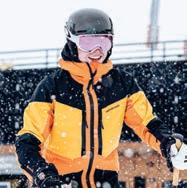
Name: Oliver, 21
Job: Boot Fitter and Ski Equipment Team
Skiing since: 10
Preferred terrain/style: Competitive racer until recently, loves steeps and pushing skis to their limit.


SALOMON WOMEN’S QST STELLA 106 PRICE: £640
The one ski to rule them all, Salomon’s QST Stella will carve powder, explore the park and cruise between the two to your heart’s content. A Cork Damplifier eliminates unwanted vibrations, giving a mellow ride, and the Double Sidewalls provide power on tap.
Carbon Powered C/FX construction (incorporating flax) helps to smooth out sketchier sections, while the full poplar wood core maximises liveliness and enhances stability.
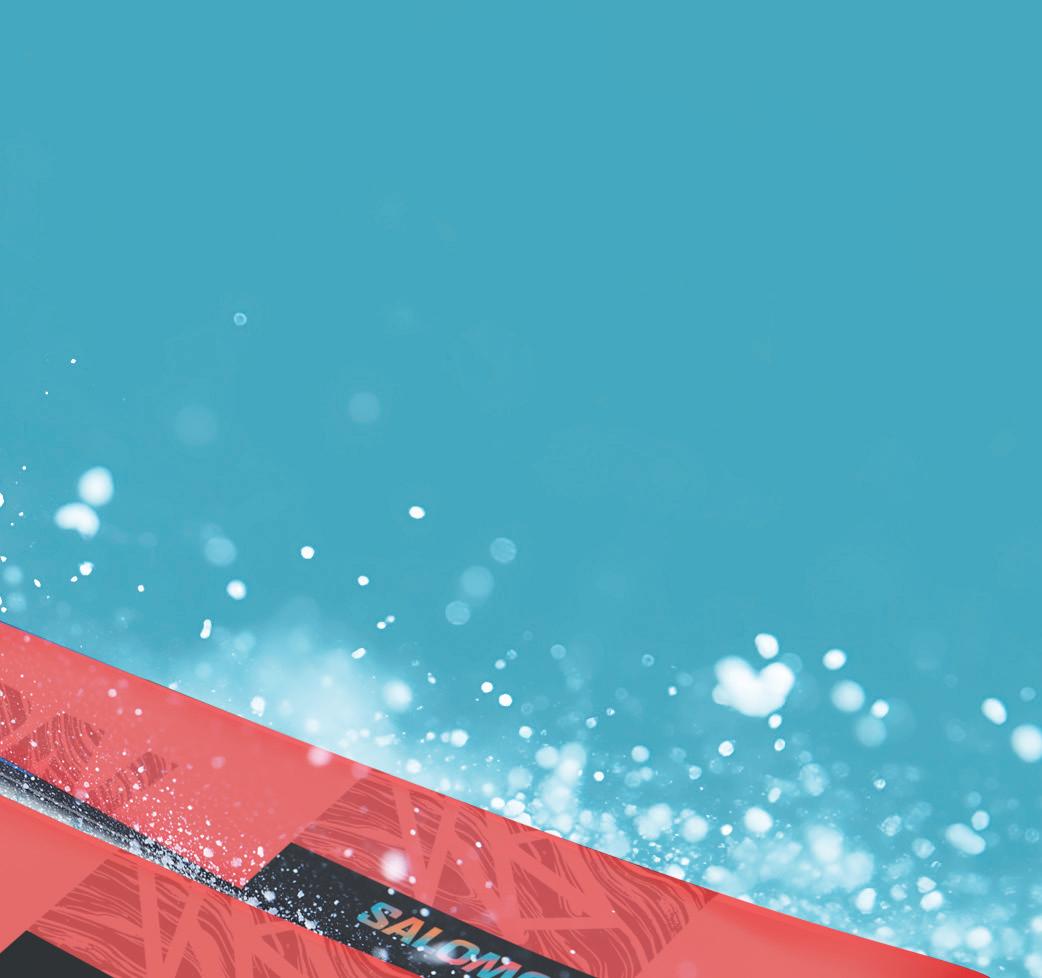



E-MAGNUM + PRD 12 GW
PRICE: £765
Versatility is the Supershape e-Magnum’s superpower. A 72mm waist, Worldcup Sandwich Cap Construction with Graphene and Crossforce Carbon, and narrow tail deliver an easy turning, powerful ride that’s smooth at high speed. With uncompromised edge grip and rebound energy, plus HEAD EMC technology, the e-Magnum handles it all.
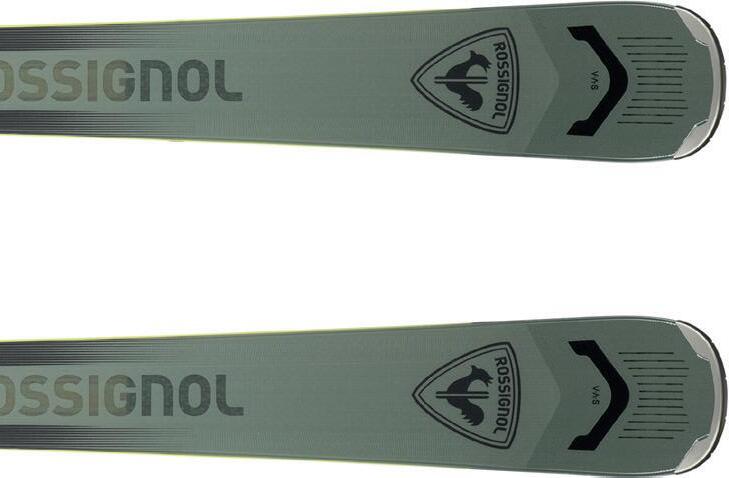
PRICE: £700
GW
Blending race tech and freeride construction, the Arcade 84 is ready for anything. With headline features including Titanal Beam reinforcement, a Vibration Absorption System (VAS), poplar wood core and generous 84mm waist, it’s designed for advanced skiers seeking to enjoy progressive carves on all terrain.


PRICE: £650
Designed by freestyle legend Kim Boberg, the Kimbo is a freestyle ski that still carves impressively, thanks to the clever shaping and quality construction. Buttery smooth flex and an AR Freestyle Rocker mean you can soak up jumps and features wherever you find them, making this one a future all-mountain classic.
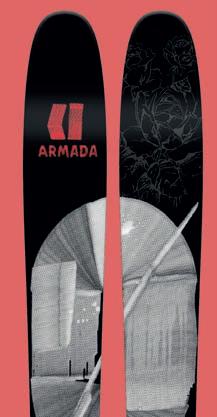



















The Black Pearl has had a complete redesign this season to include Fluxform construction, a Titanal layer and All Conditions Rocker Tech. Under the hood, a women’s specific True Blend core provides the stability and grip you need to tackle the whole mountain, whatever the conditions.
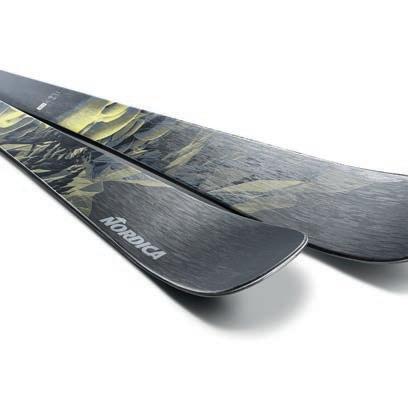
PRICE: £610
This beloved all-mountain ski has had a rework. Power and stability are joined by even smoother control due to shaping tweaks. The innovative construction uses Titanal layers surrounding a wood and elastomer Pulse core to create a firm flex, which together with the long nose makes it sail easily over the rough stuff. Tip and tail rocker also improve float.
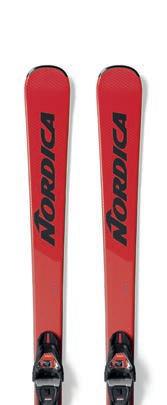
DC
PRICE: £650
The Men’s Piste Ski of the Year will see you carving all day thanks to a construction that sandwiches an elastomer between two wood cores. This delivers a connected but dampened feel, soaking up the punishment and leaving your legs fresh for the next run. That double core also means no metal is needed, lightening the load, while a 74mm waist adds extra stability.
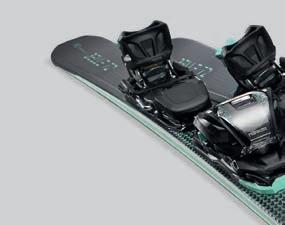



Combining the best of the classic Soul 7 and the Sender Free into a single freeride powerhouse was a shrewd move by Rossignol. Its consruction blends a central Ti plate and wood core with a lower rocker, taller camber, and more directional tail to keep it feeling snappy and playful across the mountain. We’re calling it now: the Sender Soul 102 is set to be a classic.
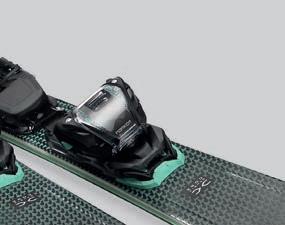
PRICE: £580
Introducing our Women’s Piste Ski of the Year. The Nordica Belle DC 72 offers great carving and clean turns whether you’re pushing the limits or just cruising groomers. Double Core construction balances out the rebound effect for a smoother, more forgiving ride, while the mounting position is specifically designed for women with a 2mm lower heel binding, ensuring a natural and centred stance.
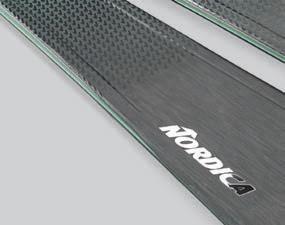



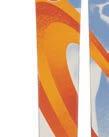


PRICE: £550



The Armada ARW 94 is a versatile freestyle all-mountain ski that thrives in the park while offering enough tip and tail rocker to float in powder. Its poplar core and innovative w3Dgewall sidewall, combined with 2.5 impact edge, deliver predictable response, reduced weight, and substantial durability for conquering jump and rail lines with confidence.

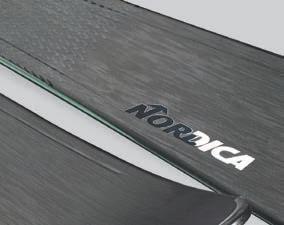
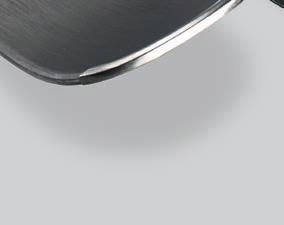





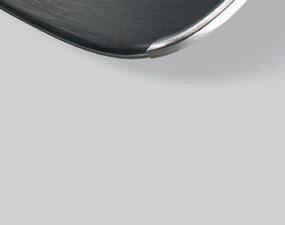









SALOMON MEN’S DEPART 1.0
PRICE: £540
Cutting edge tech is paired with cool retro looks for the new Depart, which marks a return to the freestyle ski market for Salomon. A super stable 106mm waist, distinctive pointy tip with a squaredoff tail, and substantial rocker make this model fun to ride from park to powder, while a short radius means it even carves well on firmer snow.

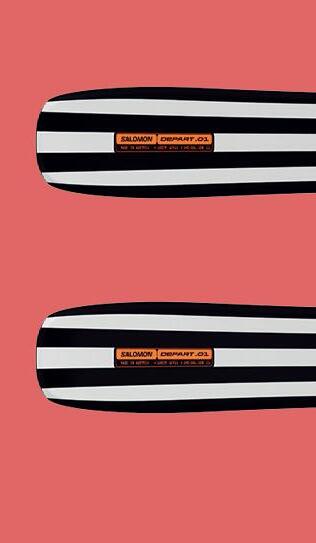
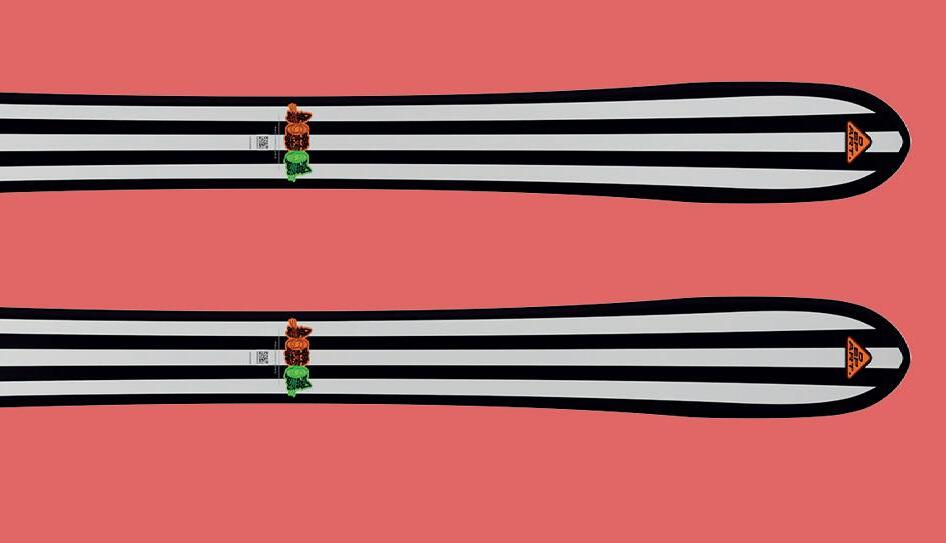
ATOMIC MEN’S BENT 110

PRICE: £590
£590



A marriage of freeride and freestyle philosophies, the Bent excels in fresh powder, offering exceptional stability and float. When the going gets rough, its HRZN Tech tip and tail let you track through chop and crud with less tip deflection, while the Powder Rocker 25/50/25 gives a surfy feel at all times. Constructed around a Light Woodcore and Dura Cap Sidewall, the Bent will also handle groomers without a blink.

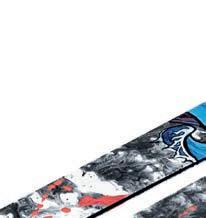



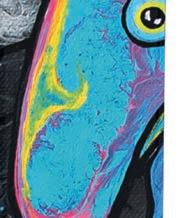


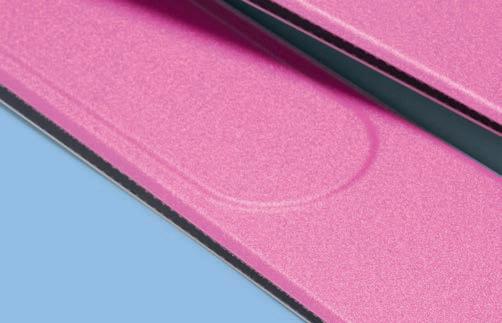

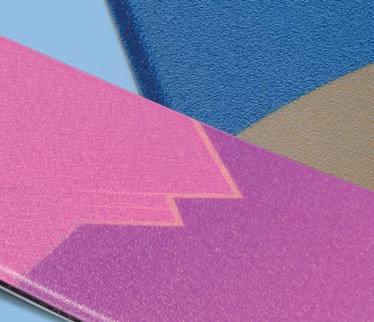

How far would you go to find the perfect pow turn? Travel the globe? Buy the best gear? For the founders of DPS Skis, the journey required a specific set of tools that they would have to build for themselves. Amy Marwick finds out more.

Based in Salt Lake City, DPS is a brand known for pioneering lightweight carbon powder skis that cater to serious skiers. It all started back in the early 2000s, when co-founder Stephan Drake, who grew up skiing on the icy slopes of America’s east coast, was pushing his big mountain skiing to the next level. Keen to squeeze every last drop from that perfect moment when both the snow conditions and his abilities aligned, he began dreaming up equipment that most ski manufacturers of the time didn’t have the vision or capacity to experiment with. And after tinkering with off-theshelf skis, modifying them to his exacting standards, the idea of creating his own ski brand began to take root.
Drake founded DPS in 2005, partnering with skiengineering superman Peter Turner. Where Drake brought his forward-thinking ideas and on-snow experience, Turner brought expert craftsmanship in the world of progressive

powder skis (Turner developed the world’s first reverse camber ski, the Volant Spatula, in 2002 alongside freeski legend Shane McConkey). The floodgates of innovation opened, and the DPS team went on to create many firsts including the first powder pintail, the first rockered ski with sidecut, and a convex, threedimensional shovelled ski with a radical edge bevel.

The brand’s dedication to innovative designs and quality materials has been key to setting their skis apart and influencing the way deep snow is skied. Their pursuit of the perfect turn continues today from their global HQ and adjoining state-of-the-art factory at the base of the Wasatch Mountains in Salt Lake City, Utah. Offering the ideal balance of resources, workforce, and proximity to both mountains and an airport, the brand set up their headquarters in SLC in 2013. They remain relatively unique in their existing setup as a medium-sized brand who manufacture their skis in the USA. While their modest scale forces them to be resourceful, they are dynamic and passionate in their approach. They prioritise craftsmanship above all else, and often put design feedback into action before the snow has even melted from their boots.
Over the years DPS have embraced and refined carbon fibre technology, which offers an exceptional strength-



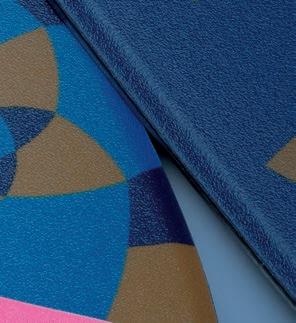
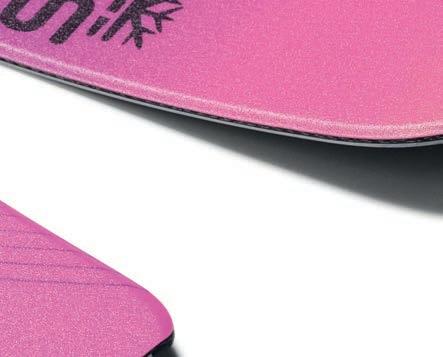
to-weight ratio, making the skis lighter without compromising performance or durability.
While the World Cup-class sintered bases and the super strong steel edges might not be noticeable hallmarks of a premium ski, the bright, timeless aesthetic of a DPS topsheet is instantly recognisable on the slopes. Inspired by surfboards and Swiss design, the block colours and clean lines reflect the simplicity of the powder turn.

The company has recently been taking meaningful steps towards sustainability, including waste reduction and recycling, alongside collaborations to develop lower impact materials for use in their skis, like the Algal Wall 63 % bio-content sidewall. However, perhaps their most significant contribution is building a durable ski that’s designed to last for many seasons of deep snow descents.
In less than two decades, DPS Skis has evolved from an idea to a leading ski innovator, with a loyal, cultlike following of backcountry trailblazers, who, if ever questioned as to whether these skis were worth the investment, would say, ‘Bro, you gotta try them!’ This season, look out for the pow-surfing DPS Carbon Lotus, the all-mountain Carbon Kaizen and Carbon Wailer, and the backcountry-exploring Carbon Pagoda Tour CFL skis, coming to an Ellis Brigham store near you.














If powder’s your game, then the Lotus 117 is your willing partner in crime. It’s entirely capable of navigating groomers to take advantage of the lifts, but really at home in deep snow. A rockered and tapered tip is designed by some of the best in the business to float through powder and smooth out snow variations, while a premium wood/carbon construction delivers lightness, power and stability.
Something of a freeride all-rounder, the Kaizen 112 highlights manoeuvrability in all mountain conditions, delivering a playful and responsive ride in everything from powder to piste. The new Split Core construction – ash on the bottom, poplar on the top – sandwiched between carbon provides power without weight, while Rockwell 48 steel edges will take punishment all day and still retain excellent grip.
£1,300
Lightweight, handmade and elegant, the Pagoda Tour 100 makes efficiency its watchword, both in the uphill and downhill. A core fabricated from paulownia and sandwiched with CFL (carbon flax) laminate provides great damping and reduced torsional chatter. It’s also stiff, strong and lightweight. Predictable and intuitive, this is a backcountry ski for all conditions.



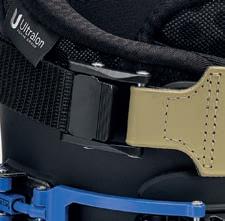







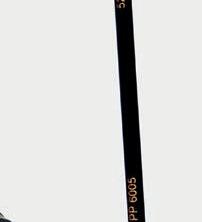




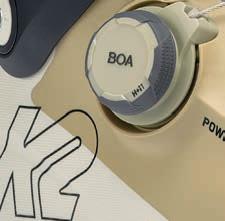
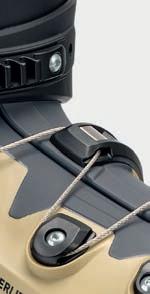
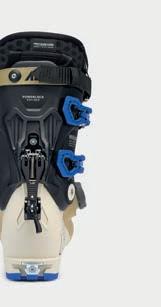






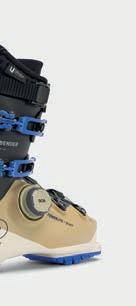




K2 MEN’S MINDBENDER 120 GW
PRICE: £675 WEIGHT: 1,823g
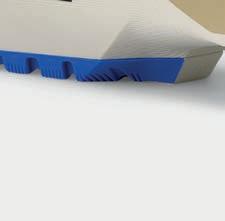

A hybrid boot that borrows from many areas of the K2 line-up, there’s a lot on offer here – not least a BOA® H+i1 Fit System and a heatmouldable Powerlite Shell with a FastFit instep for easy entry and exit. Comfort is assured on the climb thanks to the boot’s Powerlock Spyne walk mode (boasting 50 degrees of motion and a low-friction pivot) as well as a breathable lace-up inner that’s constructed from Ultralon heat-mouldable foam.
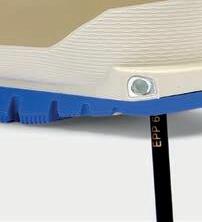











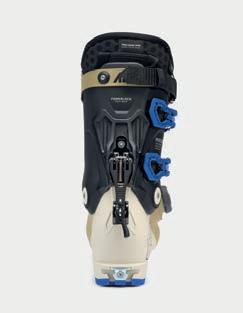
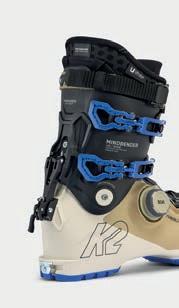





GW

















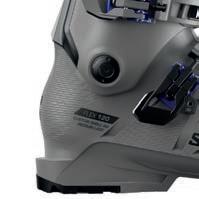

PRICE: £460 WEIGHT: 1,925g
A stiff and precise all-mountain boot, the Supra offers excellent comfort levels to the advanced skier thanks to its 4D liner construction, which uses latex foam and Talyn material that moulds to the shape of the foot. The 3D instep-pressure relieving shell technology helps stepping in and out, while the second lower shell buckle, set at 45 degrees, also contributes to ease of use.
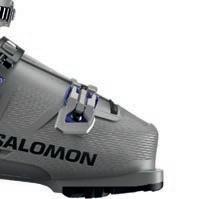












SPEEDMACHINE 3 95W BOA GW
PRICE: £450 WEIGHT: 1,700g
An all-mountain classic, the Nordica Speedmachine features Nordica’s Tri Force honeycomb shell technology to improve energy transmission without compromising comfort. It’s a mid-volume GripWalk boot that includes a customisable 3D cork liner (the cork covers the heel surface) and a state-of-the-art BOA® Fit System that allows for tiny adjustments to suit any situation.








HAWX PRIME

110 S BOA GW










PRICE: £520 WEIGHT: 1,969g
Combining comfort and performance into an alpine boot, the Hawx Prime 110 brings the BOA® H+i1 Fit System to Atomic’s tried-and tested Prolite construction, delivering a lightweight but incredibly stiff platform. A Mimic Gold Liner comes with pre-shaped heel and ankle areas, Thinsulate adds warmth, and a new Power Shift 2.0 shim system sets up your forward lean just right.





































SPORT 95 BOA GW
PRICE: £450 WEIGHT: 1,720g
Another alpine boot targeting max comfort, the Mach Sport offers a more progressive flex to soften and smooth out the ride. Combined with the BOA® Fit System and a lower shell that’s expressly designed for it, this model delivers exceptional all-day wearability. The C.A.S. Shell is shaped to the foot for a good fit straight out of the box, while its plush, anatomically shaped liner finishes the job.





















£550 WEIGHT: 1,524g
Comfort, stiffness and support define the Anthem 105, incorporating technologies like FastFit Instep, GripWalk outsoles and a PrecisionFit Pro liner. Designed for all-mountain hard-charging, it offers adaptability through the BOA® Fit System and MultiFit Last. The improved H+i1 dial allows quick release and easy adjustment in both directions, using a tried and tested design that has proven toughness even after heavy impact.

PRICE: £460 WEIGHT: 2,000g
Looking to the advanced end of the market, the RC4 110 MV marries the BOA® Fit System with the race heritage and performance of the RC4. Its lightweight yet stiff VACUUM material is well-proven and offers broad temperature stability, while a new liner and FISCHER Scan-Fit® last bring bespoke comfort. Finally, the latest generation of race canting improves power transfer and control.



















£470


WEIGHT: 1,750g


A boot that headlines comfort, the HF Pro 95 offers a user-friendly closure system that conforms to your foot contours closely thanks to an adjustable HF Pro Wiring Cable Buckle. A softer flex gives a more forgiving ride, while the customisable liner and shell can be tweaked to your preference. A GripWalk sole and HF Pro ACP (Adjustable Cuff Profile) round out the package.






































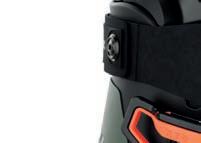

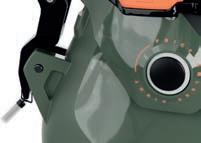


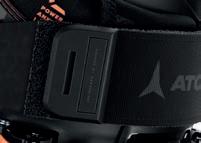
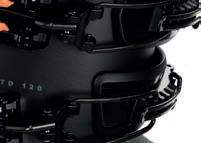


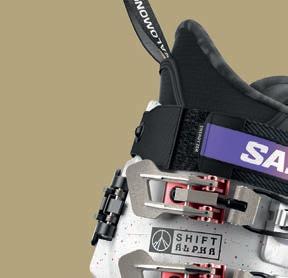







£690 WEIGHT: 1,987g

A new and improved version of a freeride classic, the Hawx Prime XTD is a highly competent hybrid boot that blends lightness, comfort and power. The BOA® H+i1 Fit System is a key upgrade, allowing you to customise the fit in all situations, while the Prolite construction and Free/Lock 4.5 system improve every ascent. And when you’re ready to ski down, the Energy Backbone ensures your turns are controlled and precise.
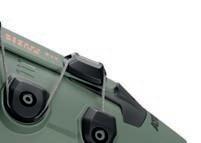


BOA fit system




















SALOMON WOMEN’S SHIFT ALPHA BOA 115 GW
PRICE: £660 WEIGHT: 1,650g
A freerider with alpine aspirations, the Shift Alpha pairs BOA® fastening with Salomon’s FreeSpine™ and EXOBELT™ technologies, making this boot a force to be reckoned with. Aimed squarely at advanced skiers, it’s also perfect for the narrower of foot, while the TwinLock mechanism with 55 degrees of motion will make short work of any uphill.













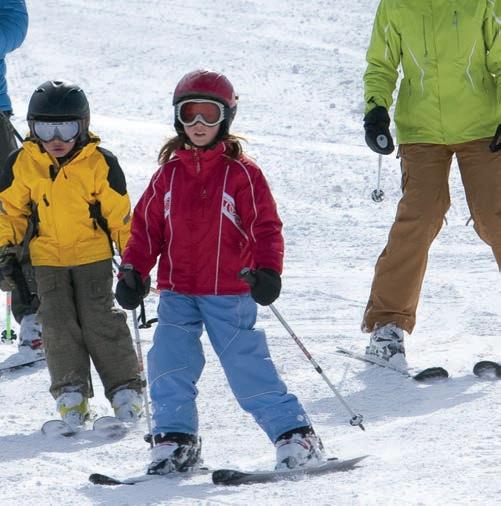
Taking kids to the mountains can be expensive, but you might just be rewarded with the family holiday of a lifetime. And as Sam Haddad explores, there are plenty of ways to save if you know how.

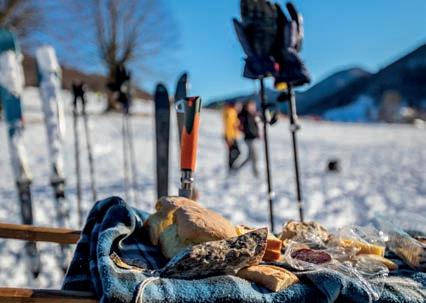
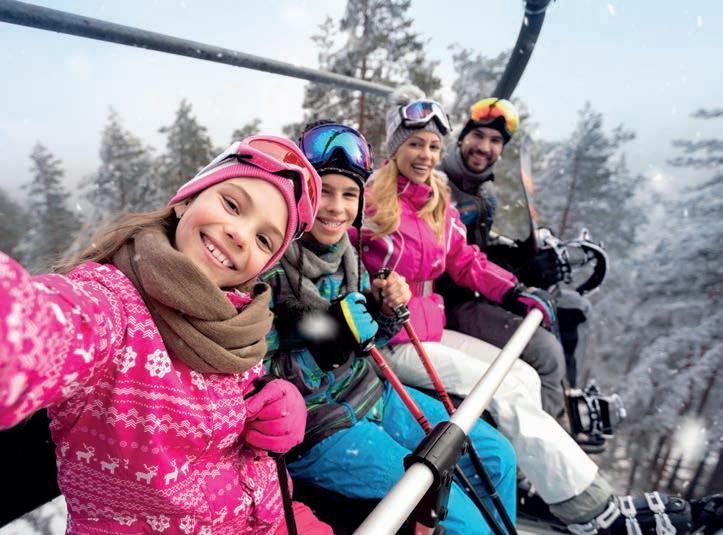
“THE
Christmas, New Year and February half-term are the most expensive weeks to hit the slopes, but prices in the Easter holidays tend to be far more reasonable. Plus, the days are longer, the pistes quieter, and the snowpack well-established. Crucially, you’re also more likely to enjoy blue skies and warm weather, which is just what you need when encouraging your kids to fall in love with the mountains. Affordable high altitude resorts like Oz 3300 and Les Menuires offer great snow right through to spring.
When searching for the best accommodation, book early to get the best deals from the usual ski holiday operators but also look at the resort’s in-house packages (usually found on their home page) and booking.com. Also don’t rule out hostels, which have had a serious rebrand in the French Alps in recent years and usually offer family rooms, though again you’ll need to book early for the school holidays. The best hostels include RockyPop in Chamonix, Hideout in Morzine, Moontain in Oz 3300, The People in Les 2 Alpes, and ho36 in Les Menuires and La Plagne.
The most popular ski resorts will be costly in the school holidays, so opt instead for under-the-radar mountain towns where accommodation and lift pass prices are likely to be lower and the slopes far quieter. You don’t need epic nightlife or a vast piste network on a family trip anyway. In France, consider Val Cenis as an alternative to Val d’Isère, Sainte Foy instead of Tignes, and La Clusaz over Chamonix. Italy on the whole is a more affordable destination, as is Austria if you avoid the big hitters (such as St Anton and Ischgl) and head for better value resorts such as Mayhofen, Zell am See, Alpbach and Damuls.
Wherever you’re heading, make sure you do your lift pass research before you go; many resorts will offer cheaper lift passes online if you buy them a few days in advance. Also, if you have lots of beginners or young children in the group, consider whether you need a ski pass for the whole piste network or if a local pass (which perhaps just covers one valley, or even the beginner slopes) will do.
Ski lessons in the Alps are expensive so it’s a good idea for families to nail the basics or brush up on technique at one of the UK’s snowdomes before a trip. The Snow Centre in Hemel Hempstead, Snowzone in Yorkshire and Milton Keynes, the Snowdome in Tamworth and Chill Factore in Manchester all run lesson bundles and discounted offers throughout the year at a cost significantly lower than you’d find in Europe. Having a few lessons before your holiday also means you’ll be able to make the most of the resort’s more exciting runs during your trip, rather than being stuck on the nursery slopes.

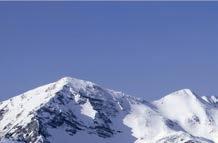
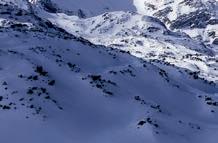
Flight prices inevitably rocket for travel during the school holidays so consider driving and taking the Eurotunnel or ferry instead, as the cost of these tend to stay more stable throughout winter (top tip – you can also use Tesco Clubcard points to buy Le Shuttle tickets). The more children you have, the more cost effective this option is. Train prices on Eurostar also spike less than flights, though if you want to travel by train you’ll need to book early as popular times tend to sell out quickly. The Man in Seat Sixty-one and Snow Carbon are great online resources for train travel to the Alps.

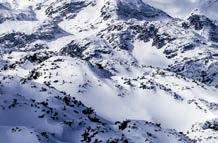

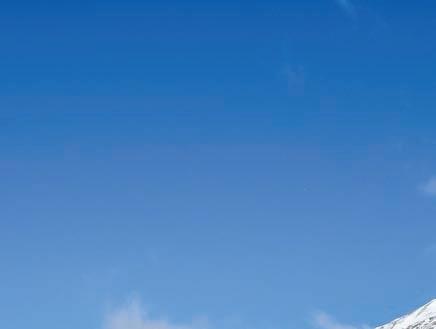
If the weather is sunny, there is no greater holiday joy than finding a quiet flat spot – ideally with sweeping mountain views – for a baguettebased picnic lunch, with a big bag of supermarket crisps of course. If the weather isn’t great, look out for the designated indoor picnic spots which you’ll find on the piste maps of most resorts. But if you can’t find those, you can often get away with buying a portion of chips and a drink at a snack bar and subtly eating your sandwiches when the serving staff aren’t looking, which is still a lot cheaper than buying a full meal at a mountain restaurant.

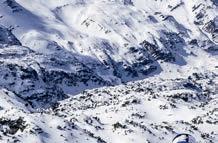
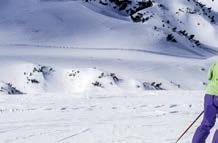



J2 + C5 GW
PRICE: £180
A fantastic ski for keen youngsters, the Redster J2 enables early, controlled turns thanks to a Race Rocker and V-shape design. Its special flex zone lets them bend the ski with less effort.




T L
PRICE: £100
The S/Race 60, inspired by Salomon’s race line, is designed for younger skiers. It features a shorter cuff, Polyolefin plastic shell, and thinner construction for just the right support.
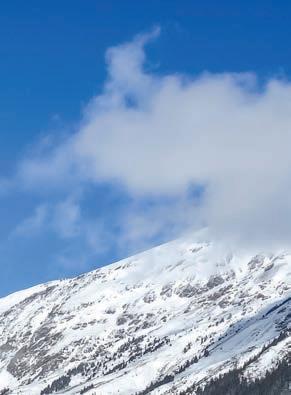

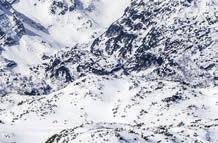
Self-catering is always the way to go, allowing you to organise your own breakfasts and cook for yourselves in the evenings. Resort shops can be pricey, so if you’re driving, load up on staples from home including cereals, pasta, rice and tinned tomatoes. Stopping off at a large supermarket on the way is a good shout too (Carrefour has a map of all their branches online). Also consider freezing an easy family favourite, such as veggie chilli or spag bol, before you travel, then bringing it out in a cool box to have on your first night. On the nights when you can’t face cooking, takeaway pizza, especially from street food vans, is a cheap option.
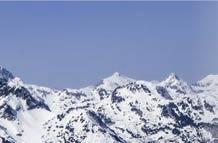
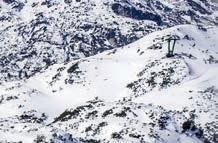
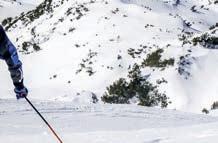
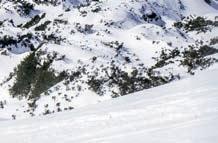






PRICE: £50
The Orka helmet features a lightweight polycarbonate shell and EPS foam liner for impact absorption. The Custom Dial system ensures a great fit, while passive ventilation channels keep it cool.




PRICE: £35
Designed for 6-to-11-yearolds, Salomon’s Lumi goggles boast soft face foam, a Cat 2 cylindrical Flash lens to reduce glare, an easy-adjust strap and that all-important helmet compatibility.


PRICE: £35


The Rascal goggles are aimed at the youngest kids and provide excellent eye protection thanks to a double-layer lens with anti-fog coating. They’re also compatible with optical glasses.
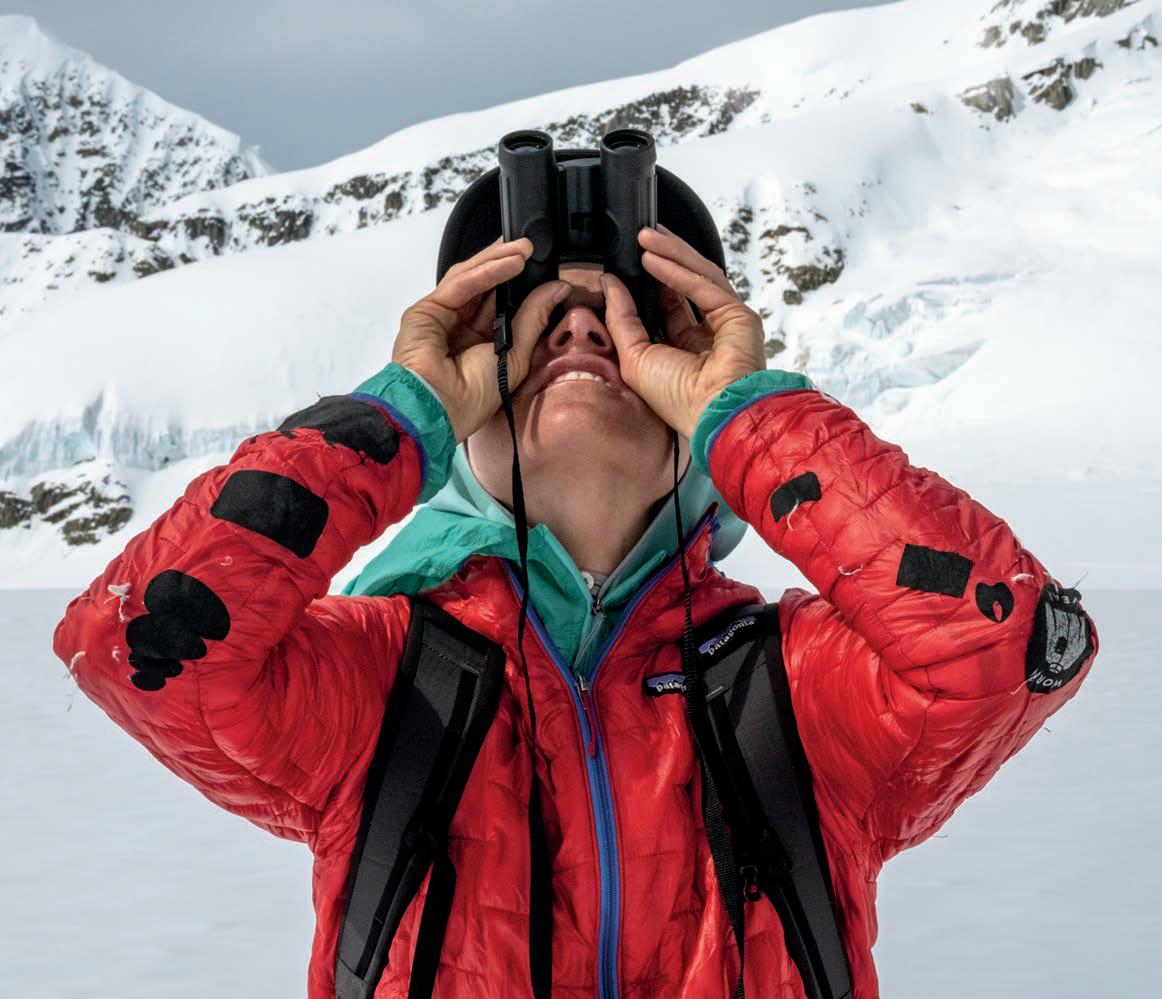
Built for years, not seasons.
We make quality gear for lifetimes of doing what you love. And for a future all of us can love, Patagonia profits go to protecting and restoring this wild and wonderful planet.

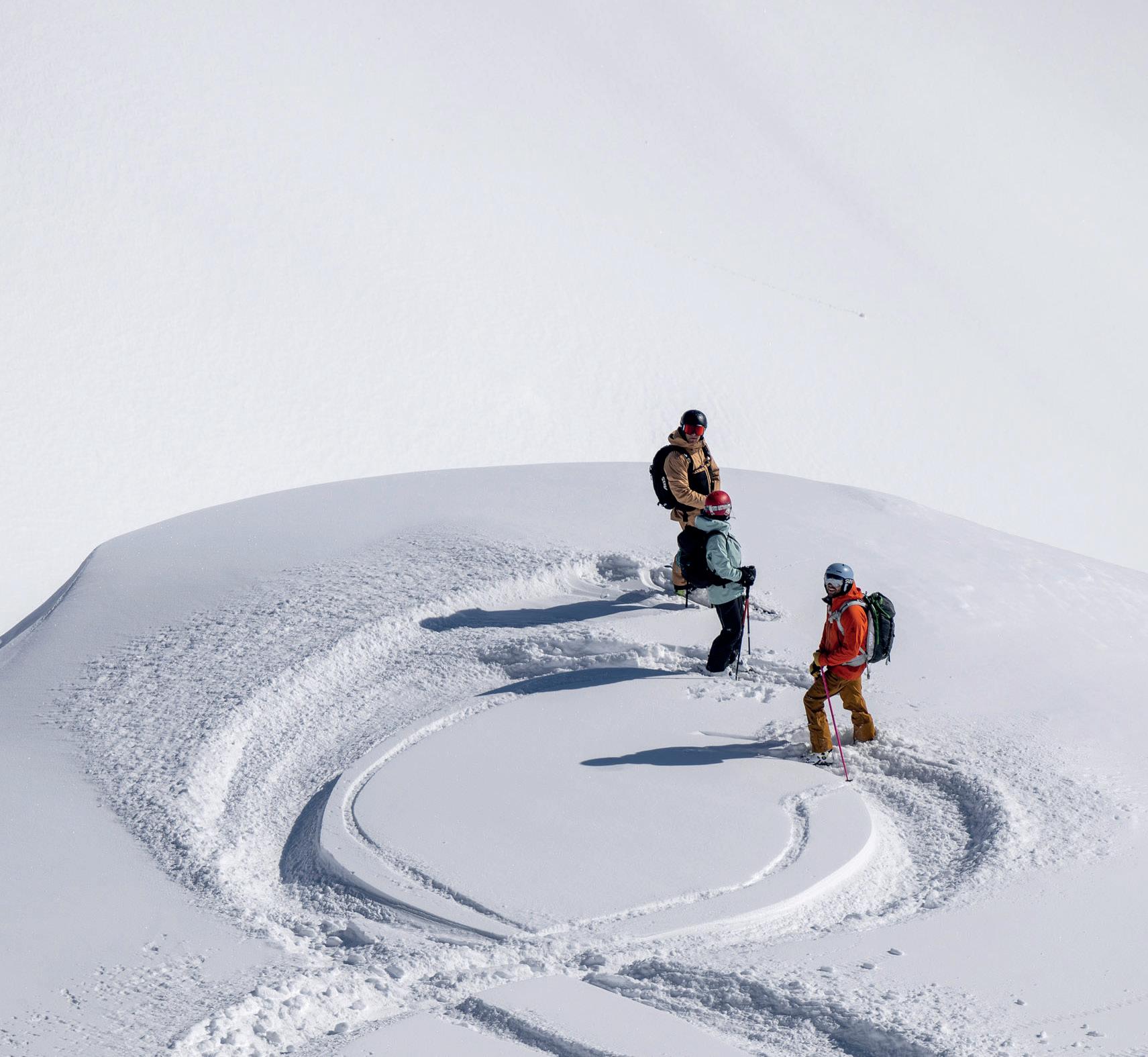
Gliding through untouched powder is the dream of every skier. But before you venture outside the resort’s marked runs, a solid understanding of safety, technique, and gear is required. Guy Coles from New Generation ski school takes us through the basics.
‘Off-piste’ is a broad French term that simply means ‘off track’. You don’t need to be way out in the backcountry to be off-piste; you could be right at the side of the run. In North America, off-piste skiing is split between ‘in-bounds’ (which takes place in an area managed by the local ski patrol) and out-of-bounds (completely outside of the resort). In Europe, the ski patrol only monitors the snow on slopes that threaten marked runs or infrastructure. That means that every time you venture beyond the ropes, you are responsible for keeping yourself and your party safe.
Nothing beats local knowledge. Instructors and guides spend the winter developing a deep understanding of what’s happening in the mountains around them. They can find the best snow, terrain that is perfect for your level, and keep you as safe as possible – as well as provide personalised advice and training. However, if you are heading off-piste on your own, take heed of the following...
In all European resorts, you’ll see a flag or board indicating the avalanche risk for the day. This is provided on a scale of 1 to 5, with 1 being Low Risk and 5 being Very High. Bear in mind that the risk level is calculated across a huge area of at least 100sq km; it gives you no information about a specific mountain or slope. 85% of avalanche fatalities happen when the risk is level three or below, on days when many skiers perceive that the danger is low.
If you’re skiing without a guide, be sure to dig further into the avalanche bulletins to understand the risks of
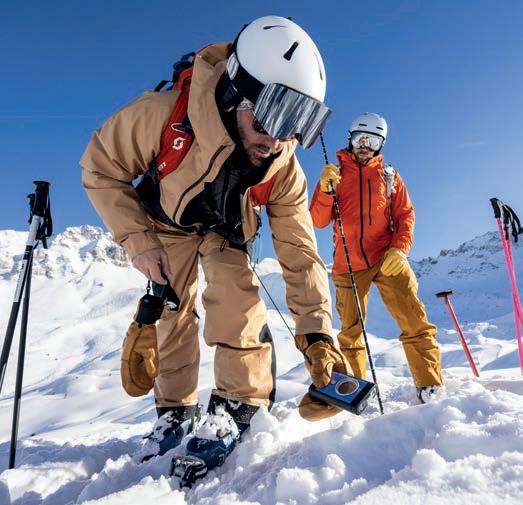
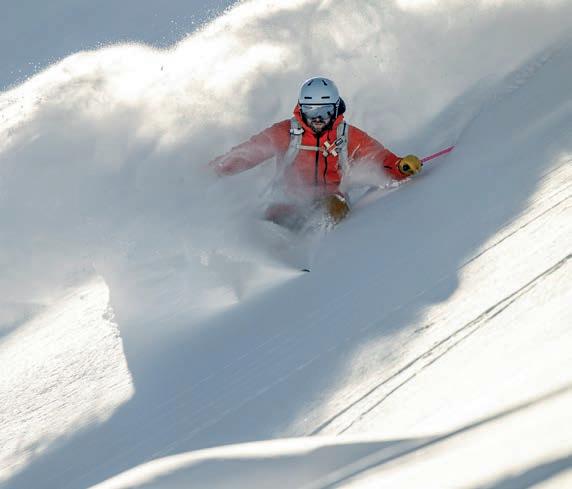
skiing a particular slope. They contain data on specific elevations and aspects, and details of any expected problems.
As a bare minimum, you should carry – and know how to use – a transceiver, shovel and probe. Having all three items is essential. We often hear, “I have a transceiver and shovel; they’re the important ones.” Or “What difference can a long stick make?” The answer is a lot. If you’re buried for over 15 minutes, your odds of being rescued alive drop drastically – from 90% to 40%, and that’s if you’re rescued within 30 minutes. The average rescue time without a probe is 25 minutes, and with a probe, it is just 11 minutes.
Every step of an avalanche rescue – from the search to the dig – requires skill and determination. We recommend attending an avalanche course. See the diary page in this magazine for information on courses at Ellis Brigham stores this winter.
Knowing how to read the terrain ahead is crucial for making decisions that keep you safe. Look out for terrain traps (where sliding snow is likely to collect) and safe places to stop and regroup. Consider also what’s above and below the zone you plan to ski.
With time, even the texture and look of the snow will give you an idea of what to expect. Sastrugi, suncups and surface hoar are all indicators to help you work out what kind of snowpack is under your feet.
Heavy snow can hide rocks and other dangers –look for unexpected inconsistencies on the surface that don’t fit with the broader pattern. Build a mental library of these situations to learn from.
Finally, always ski one at a time, maintaining line of sight with the rest of your group. This way, if the worst does happen, only one skier is caught.
“BEING
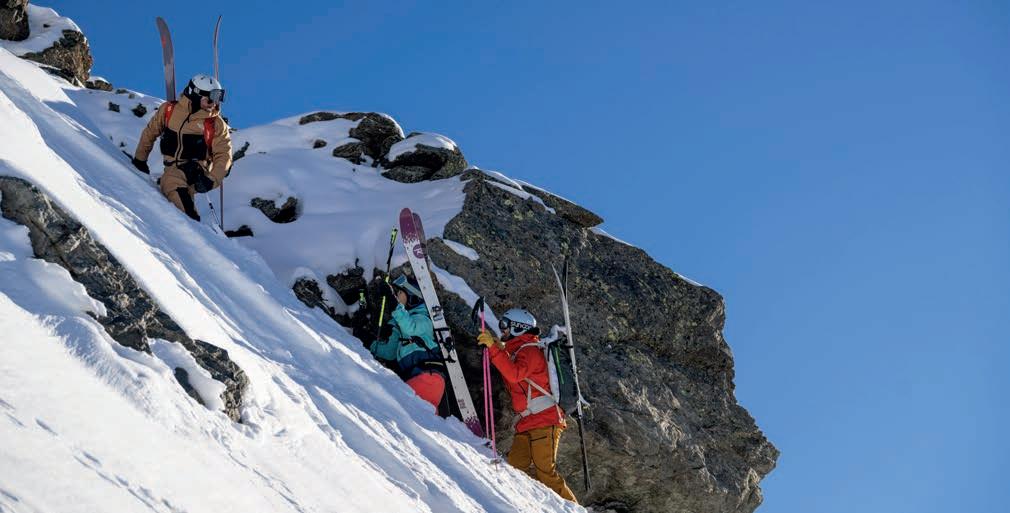
Despite what the movies would have you believe, skiing off-piste isn’t always about skiing powder. Away from the groomed runs, you’re likely to experience varied conditions – from cold smoke billowing over your face to sun crust and slush.
Being a confident off-piste skier starts on-piste. The core techniques that make our skis turn are ultimately the same, so don’t throw everything out the window. Instead remember those basics and make minor tweaks depending on conditions. A well-timed pole plant to help your balance and rhythm is a good example that applies to every aspect of your skiing. Think of your poles as a timing device that marks the beginning or end of each turn.
In soft snow, ski with a narrower stance and a more even weight distribution between your feet. Rather than loading up that outside ski. Depending on your skis, you may need to adjust your fore/aft balance slightly – but don’t lean back.
When skiing crust, it’s tempting to try to be light on the skis to avoid breaking the surface. This lets you skim over the top. It might work for a bit, but you’ll know about it when you break the surface. Instead, force your way through. Again, stand with more even weight on both feet. Push through the crust to turn. Use your legs to steer in a C-shaped arc.
This is like skiing on-piste but with less certainty. You’ll need to keep your legs a bit softer and ready for shocks. Wind-scoured snow can quickly change from grippy to slippy and back again.
There’s nothing to stop you from skiing powder on your narrow GS skis; it’s just more challenging. Wider, softer skis will help. Most all-mountain or off-piste skis have a rocker in the tip and/or tail. This helps the ski float better and shortens its effective edge, making it easier to turn.
Boots play a massive part in how much fun you have. If they’re too big, or not supportive enough, you’ll find it harder to make the necessary small adjustments to your technique and may get blisters. Too small and you’ll experience painful pressure points. A great-fitting boot will only get comfier as your technique improves. The Ellis Brigham in-store teams can ensure you have the perfect fit.
Be prepared for periods of intense activity, followed by moments of calm as you assess your route, wait for others or take a break. Your clothing must adapt quickly to changing body heat and weather, so go for a 3-layer system consisting of a base layer, mid layer and shell.
Modern tools like FATMAP have revolutionised offpiste navigation and route finding. The apps offer detailed maps and routes, and clever overlays. Be sure to combine this with the avalanche information.
Skiing off-piste is an adventure that offers unmatched freedom and excitement. But it’s also an activity that demands respect for the mountains and a commitment to safety. For information on off-piste courses in 19 resorts across the Alps, visit skinewgen.com
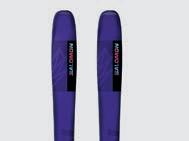
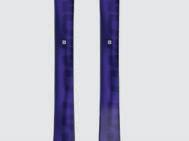

PRICE: £550
A tried and tested freeride favourite, the QST 98 won’t intimidate the intermediate, progressing skier thanks to the full sandwich double sidewalls and cork damplifier that deliver stability in deep snow and playfulness but reliability in the turns. A medium camber ensures good grip on hard-pack, and a progressive, long rocker in the tip and tail aids float.


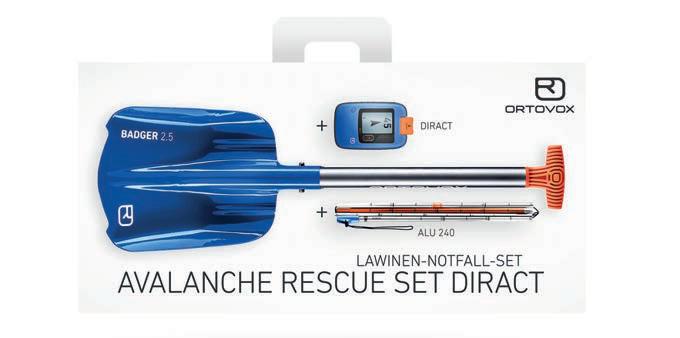





PRICE: £180
Designed to excel on long tours, the Glidelite Mix FL climbing skin is made from a Mohair/ Nylon mix backed with BD’s tried and tested Gold Label adhesive which will bond in the worst of conditions. The tail clip is lightweight and low profile, as well as adjustable and replaceable in the field if needed.






PRICE: £420
If you want full touring and freeride capability this is the binding for you, a proper hiking binding till you flick the switch to freeride for the blast back down. In alpine mode it’s compatible with all ISO normed boots on the market – alpine, GW and tour - there’s no need to compromise whether you’re enjoying the resort or heading out on an adventure.






Backcountry Bundle discounts 10% o skis, bindings & skins together
Add boots and get 15% o
£370
A top-quality bundle for new backcountry adventure seekers, this kit contains a Diract transceiver, an Alu 240 probe, and a Badger Shovel. The Diract’s Smart Antenna can provide up to double the range, making you faster to find. The probe’s quick-lock makes it quick to deploy, and the superlight Badger Shovel packs down small and unfolds in an instant.



PRICE: £625
An all-new hybrid boot that effortlessly bridges the gap between piste and backcountry, the Mindbender 110 Boa is designed to deliver on the downhill as much as it does on the up. A robust midrange specialist includes Boa fit, Luxfit Pro Tour moldable liners, Powerlite shell and a friction-free, 50-degrees of motion cuff pivot.



PRICE: £200
Montane’s Men’s Fireball Lite Hoodie is ready for the stop-go demands of a day off-piste.
With an air-permeable Featherlite Air stretch face fabric, Active Eco synthetic insulation in the core and Thermo Grid stretch fleece side panels, this lightweight, breathable mid-layer provides warmth and comfort.









PRICE: £399
The Ceptor 3-layer shell jacket from The North Face delivers high levels of worstweather protection and breathability, and layers well with various insulated and fleece jackets for seasonlong and all-mountain versatility. The DryVent Mono 3-layer outer fabric is waterproof, breathable, and 100% recycled with monomaterial construction for easy further recycling.

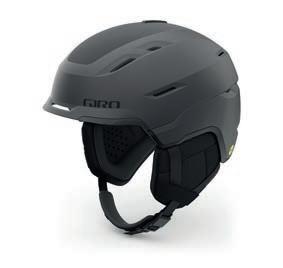
£250
Blending durability with lightweight design, the Tor features a hard-shell upper and in-mould lower section. Its Mips Spherical Technology features a two-piece liner to minimise rotational impact, while a glove-compatible magnetic Fidlock chin buckle and Wikpro Grid Fleece liner ensure optimal comfort and convenience.

£125

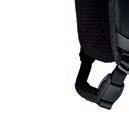


£170
The days when you had to choose between style and substance are long gone. Witness the Method Pro, which effortlessly blends great looks (including a matte finish) with top-tier protection. Featuring both Zonal Koroyd and Mips impact tech, plus nine fixed vents and 68% recycled or upcycled content, it sets the bar sky-high.



A skate-style lid that’s ideal for the park, the MOD1 Pro is as tough as they come yet packs all the mod-cons – including Mips protection and a removable, washable Polartec PowerGrid liner. The ABS shell shrugs off minor scuffs, while a plethora of vents keeps hot air on the move and away from your goggles. A 360° BOA fit system ensures the fit is perfect every time.










£230
The Driver Pro packs in all the advantages of a built-in visor with none of the disadvantages. The lens (CAT 2 Sigma Emerald) fits snugly like a goggle, sealing weather and bright light out, but can be slid up when needed without becoming detached. Low-density EPP inserts and the EPS4D liner combine to boost safety.





£170


Freeride-inspired, the Four AMID Pro pairs an in-mould top section with an injected polycarbonate lower to balance weight and durability. A uniquely shaped Holo Core EPS foam liner offers 30% better impact protection than the industry standard, while dual-density foam reduces impacts further. Plentiful venting amps up the comfort.



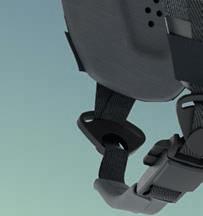




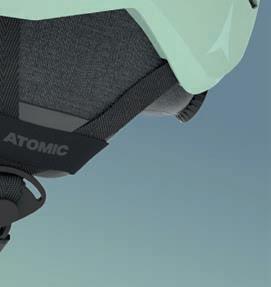








£184













The NFX2 delivers frameless, wide-angle vision with Dragon’s Lumalens tech for optimised colour and enhanced contrast. Armoured venting is easy to clean and prevents snow clogging, while triple-layer foam with hypoallergenic micro fleece lining ensures comfort. Built for durability and clarity, these goggles excel in all conditions.




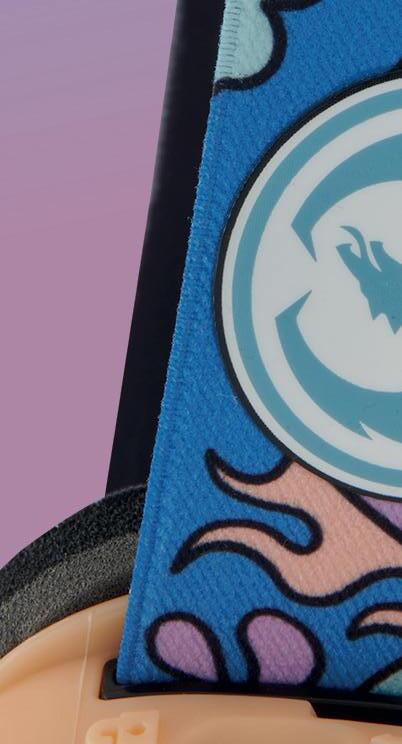
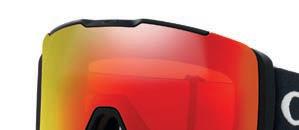




£192
This tried and tested classic features a toric Prizm Lens in a rimless design, resulting in a massive field of view. The Argon Iridium lens handles a wide range of light conditions as well as looking awesome, while the distinctive custom colourway – chosen by alpine ski legend Mikaela Shiffrin – adds another layer of eye-catching sophistication.







Take your mountain vision from regular to widescreen with the MAG XL goggle, which boasts a spherical Carbonic-x lens for maximum field of view. The ChromaPop lens tech delivers top-quality colour and improved contrast in marginal conditions and is backed up by a magnetic quickchange system. Snug integration with Smith helmets is a given, of course.

The Line Miner Pro is a major upgrade on one of Oakley’s most popular models. Its unique single-layer Prizm lens bakes the anti-fog onto the outer surface and reduces distortion, refraction and reflection. Switchlock magnetic lens changing is simple and secure, and they come with two lenses included.




The slimline profile of the DX3 Plus, based on a bestselling model, offers a snug fit and wide field of view. It ups the ante with the addition of a premium injectionmoulded cylindrical Lumalens that boasts hydrophobic, oleophobic and anti-fog properties. Coming with two lenses, armoured venting and glasses compatibility, it’s a top-flight goggle for serious skiers.

Slopestyle and Big Air are the disciplines I’ve competed in since getting into freestyle skiing. I started at my local snowdome in Tamworth and became a regular at the park nights. After a short and fairly unsuccessful career in junior ski racing, I quickly realised that juggling both racing and freestyle wasn’t for me and pursued the baggy clothing and creative freedom that comes with freestyle skiing.



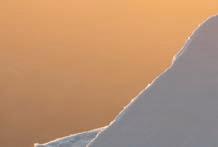
Our Tamworth crew member Tom Greenway is a global talent with his eyes on the Olympics.
Name: Tom Greenway
Job: GB Snowsports Slopestyle and Big Air
Athlete, Ellis Brigham Store Assistant
How long at Ellis Brigham: 5 years
Location: Tamworth
I’ve competed in World Cup contests across the globe, as well as numerous core ski events. I’ve also had multiple Europa Cup top 5s and held the British title, but scoring a top 20 in Slopestyle during my debut WC season was a big achievement. I’m also stoked to ride with the best skiers in the world, some of whom were my idols growing up. To be able to call them my friends now is still surreal.





In the near future, all eyes are now on Olympic qualifying. Until then I’m prioritising dialling in tricks that I want to perform at contests and keeping my body strong and healthy. Outside of this, I want to continue attending events that drive my love for skiing, like Jib League, and devote some time to filming a collaborative video with my friends from BoomClub. Keep your eyes peeled in 2025!




Freestyle skiing can be extremely heavy on your equipment and Ellis Brigham have always provided any bits I need. The awesome group of people that run the Tamworth store have also been quick to welcome me back to work during my offseason. Working there, I’ve learned a lot more about gear and the fine-details of setting it up, which has elevated my performance on snow massively.








